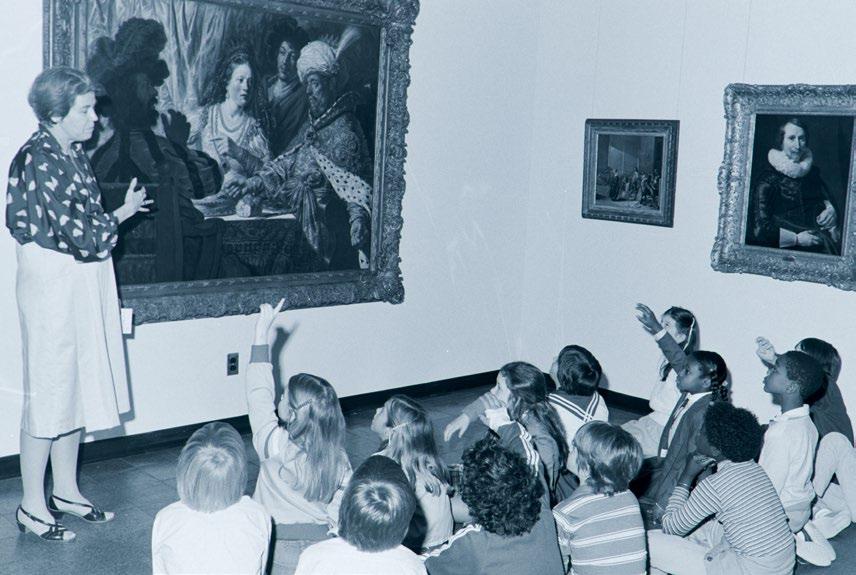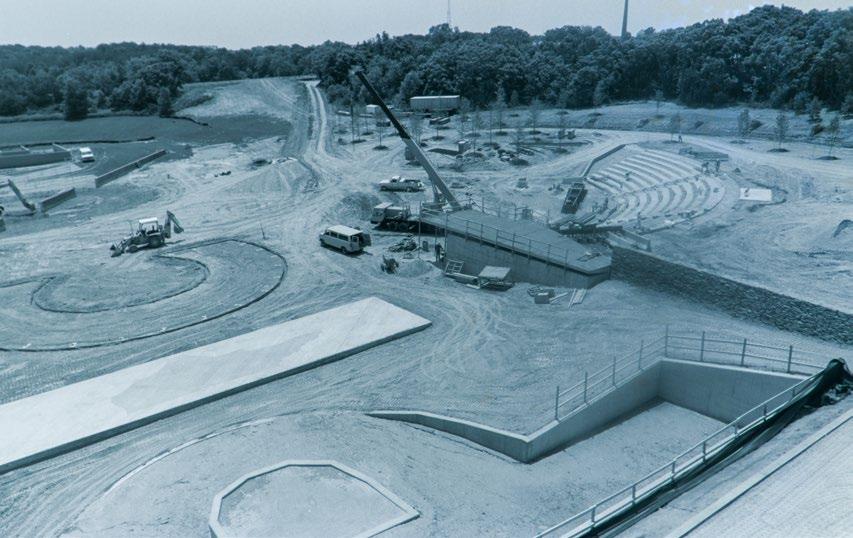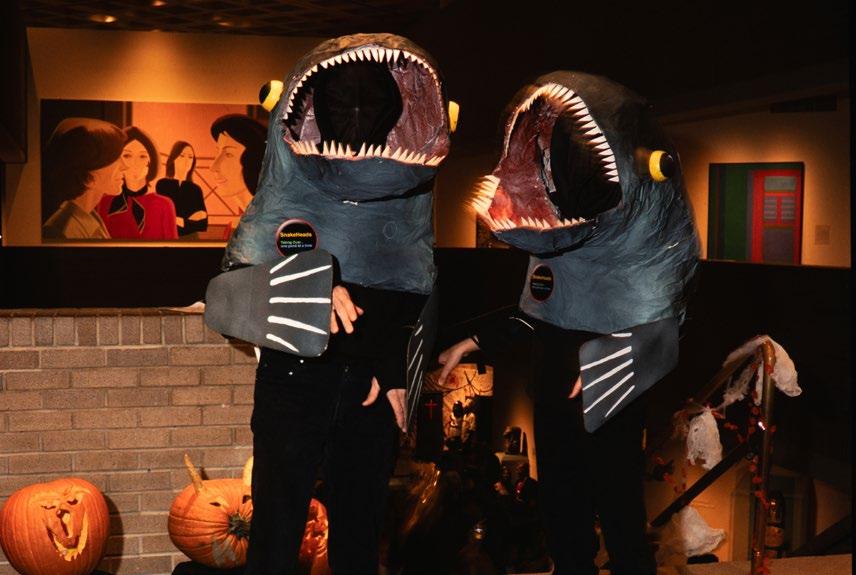





MANAGING EDITOR
Laura Napolitano
DESIGNER
Dan Ruccia
PHOTOGRAPHERS
Christopher Ciccone, Vann Powell
CONTRIBUTORS
Cameron Allison, Lori Cowherd, Wale Ejire, Laura Finan, Nicole Flynn, Molly Hull, Sabrina Hurtado, Felicia Knise Ingram, Karen Kelly, Courtney Klemens, Angela Lombardi, Diedra McEntyre, Lizzie Newton, Philip Pledger, Bryanne Senor, Jill Taylor, Janis Treiber, Oliver Wagner, and Katherine White
Preview is published by the NCMA four times a year.
The exhibitions and programs featured in Preview rely on support from people and organizations who value the Museum and its work. Please consider donating to the NCMArts Fund at qrco.de/ncmaartsdonation

cover: Yōshū Chikanobu, Women warriors at Kagoshima (detail), Meiji period, 1877, color woodblock print on paper, 14.6 × 29.1 in., The University of North Carolina at Chapel Hill, Ackland Art Museum, The Gene and Susan Roberts Collection (2021.51.12a–c)
Exhibitions in Preview are made possible, in part, by the North Carolina Department of Natural and Cultural Resources; the North Carolina Museum of Art Foundation, Inc.; and the William R. Kenan Jr. Endowment for Educational Exhibitions. Research for these exhibitions is made possible by Ann and Jim Goodnight/The Andrew W. Mellon Foundation Fund for Curatorial and Conservation Research and Travel.
The North Carolina Museum of Art is a division of the Department of Natural and Cultural Resources, D. Reid Wilson, secretary.
The NCMA’s mission is to steward and share the people’s art collection and inspire creativity by connecting our diverse communities to cultural and natural resources. Its vision is to be a vital cultural resource for the entire state and a national leader in creating a welcoming experience of belonging and joy.
The NCMA visual mark is inspired by Thomas Sayre’s Gyre (1999), a site-specific work of environmental art in the 164-acre Museum Park.
Dear Friends,
As we look toward a new year at the Museum, what excites me most is art’s ability to create paths for discovery and connection, transporting us beyond our day-to-day lives to somewhere unexpected. Whether strolling in the Museum Park, attending an exhibition lecture or workshop, or visiting the People’s Collection, each moment provides a unique opportunity to build connection and community through creativity.
In this winter issue, we dive deeper into our current special exhibitions with behind-the-scenes insights from the NCMA curatorial and program teams. Learn how an Egyptologist approached curating a samurai exhibition (pages 2–3), take an exclusive peek at the custom digital game created for Samurai: The Making of a Warrior (pages 4–5), and read more about the interwoven cultures that produced Ottoman and Venetian fabrics over four centuries (pages 6–7).
We also invite you to practice self-care through the arts of wellness (page 11), enjoy new additions in the People’s Collection (pages 14–15), and mark your calendars to join us for an array of winter events, programs, workshops, films, and more in the coming months (pages 16–19).
The year ahead brings exciting additions that will continue to shape our future as an institution, including a new assistant curator of African art (page 12) and an exciting series of projects to enhance the buildings and natural assets at the NCMA campuses in Raleigh (pages 20–21) and Winston-Salem (page 22). Together, we are ensuring future access to art, creativity, and cultural inspiration for all North Carolinians.
With appreciation and my best,

Valerie Hillings
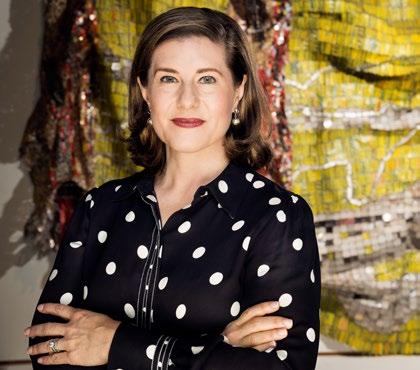
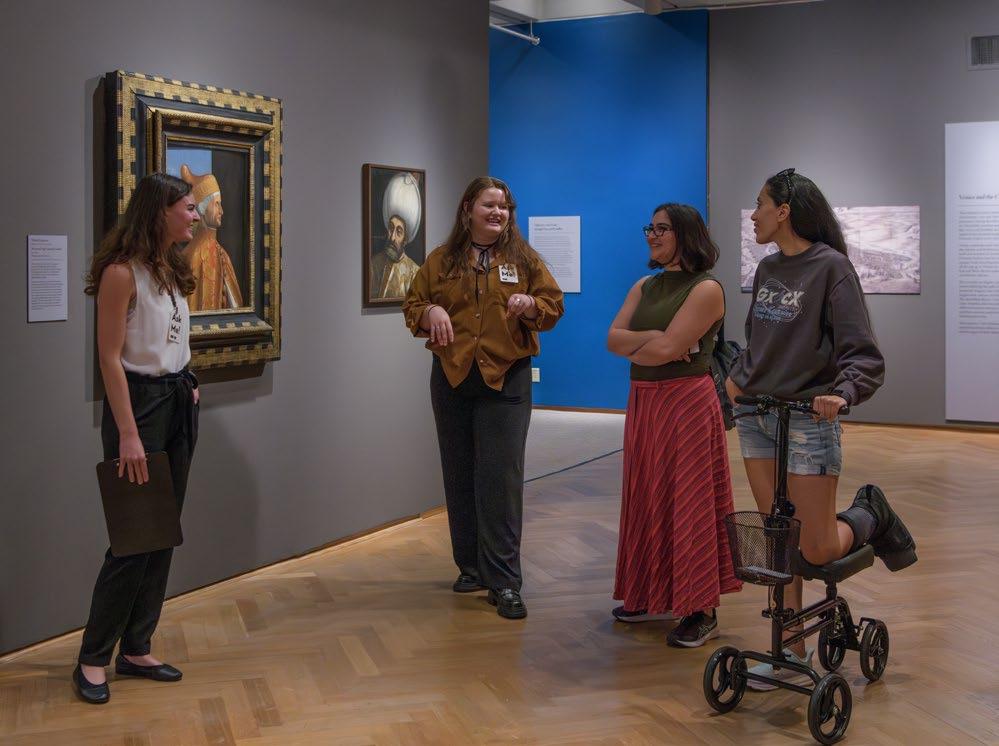
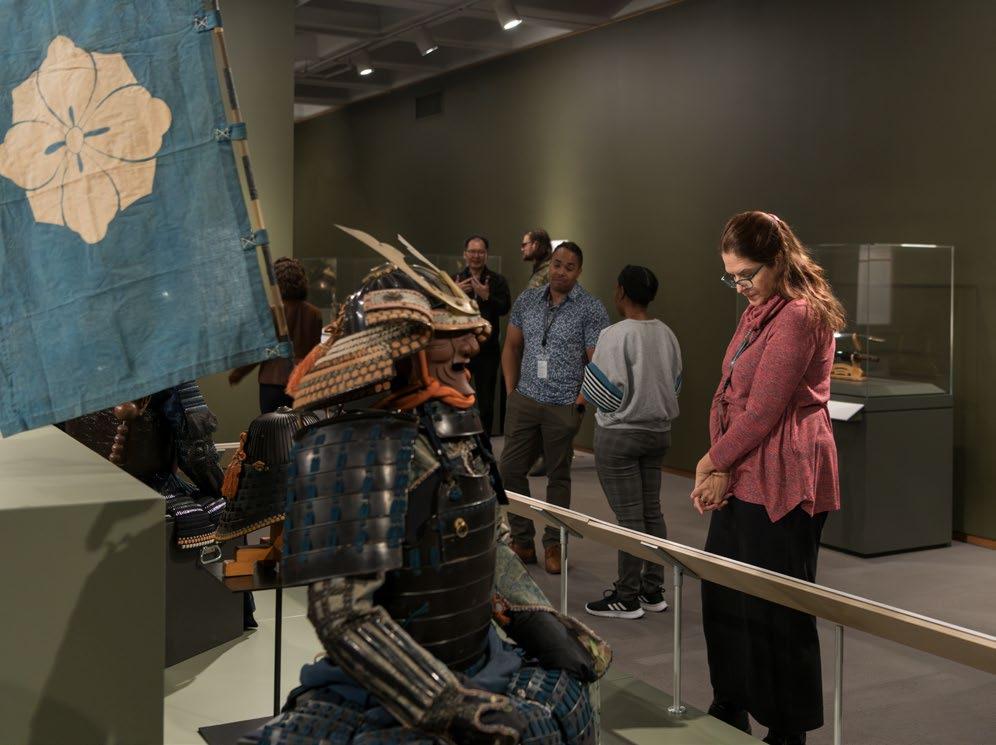
caroline m. rocheleau Curator of Ancient Collections and Exhibition Curator
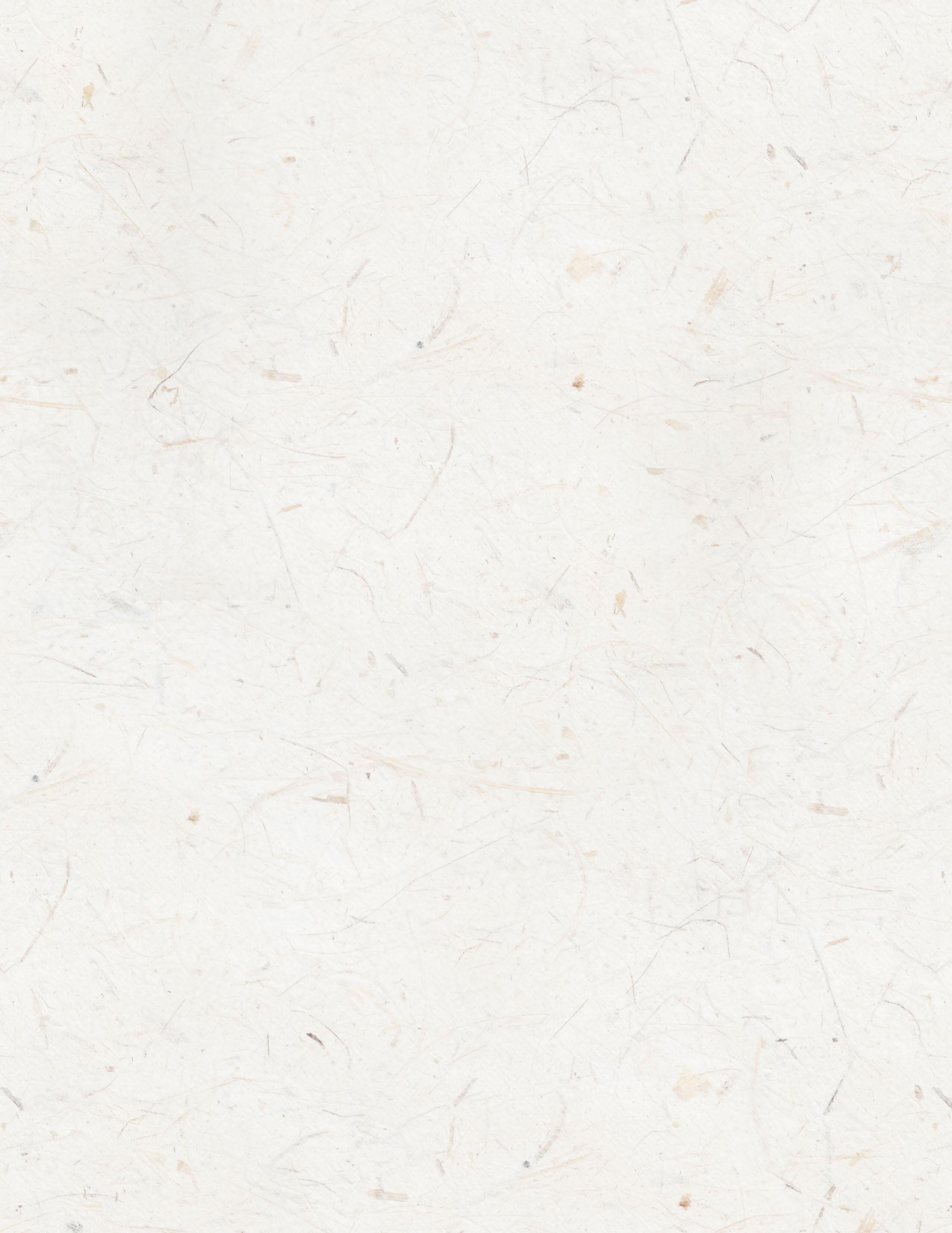
My exposure to Asia while growing up in rural Quebec was Saturday morning Japanese anime dubbed in French, my mum’s notso-Chinese eggrolls and fried rice, pop music that mentioned Asian cities or had Japanese words in their lyrics, and the 1988 Seoul Summer Olympics.
In the 1980s Japan loomed large, and it intrigued me, but it was not until university that I managed to find a course on Asian art. It was an amazing class, and I wrote my term paper on Japanese temple architecture. I was eager to learn more about Japan; opportunities were few and far between, but I seized as many as I could. (I even got my orange belt in aikido!)
Curating an exhibition on the samurai stems from this early interest and aligns with the Museum’s 2020–25 strategic plan goal to highlight multiple, diverse histories, voices, and perspectives. In the West we are taught very little about Asian history, and what we know often relates to food, pop culture, and international events. Upon hearing the word samurai almost everybody will think “Japanese warrior.” Most of us, however, won’t know much about the historical, political, or cultural context associated with them. Through my discussions with the armor collector who lent his holdings to Samurai: The Making of a Warrior, consulting scholars, and Japanese community partners as well as my research for the exhibition, I realized how true this is.
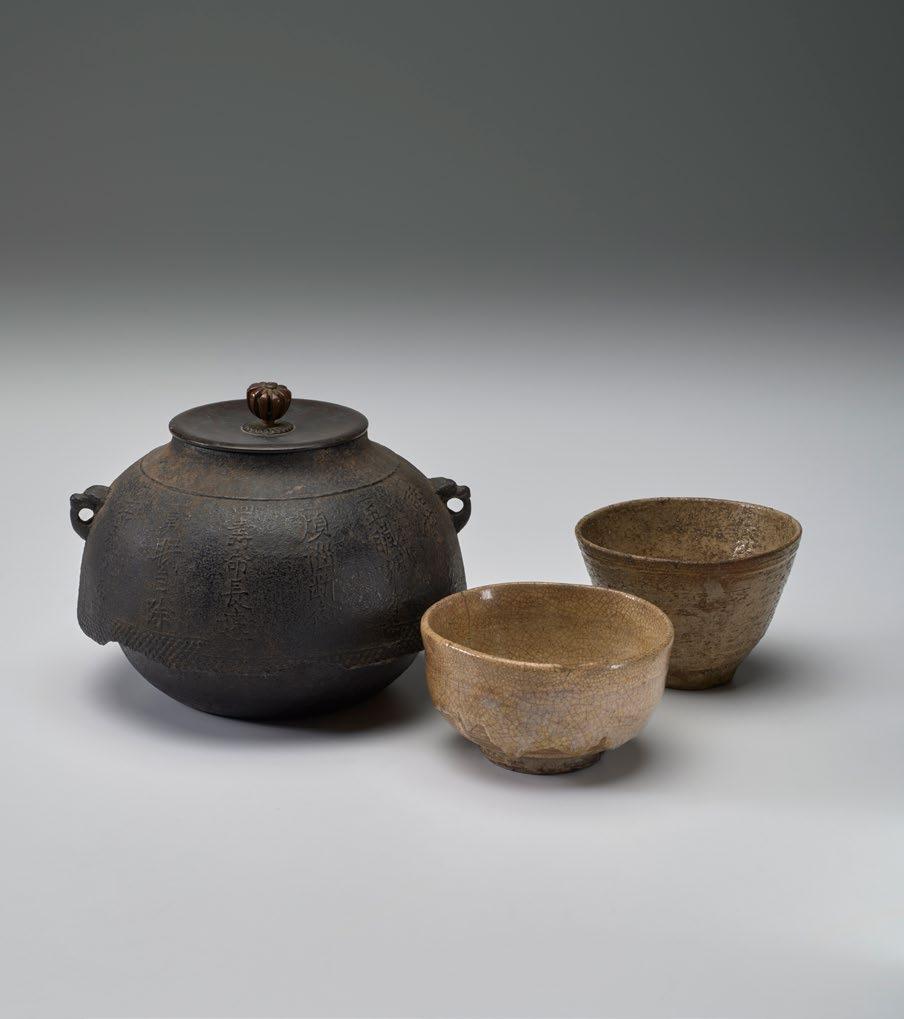
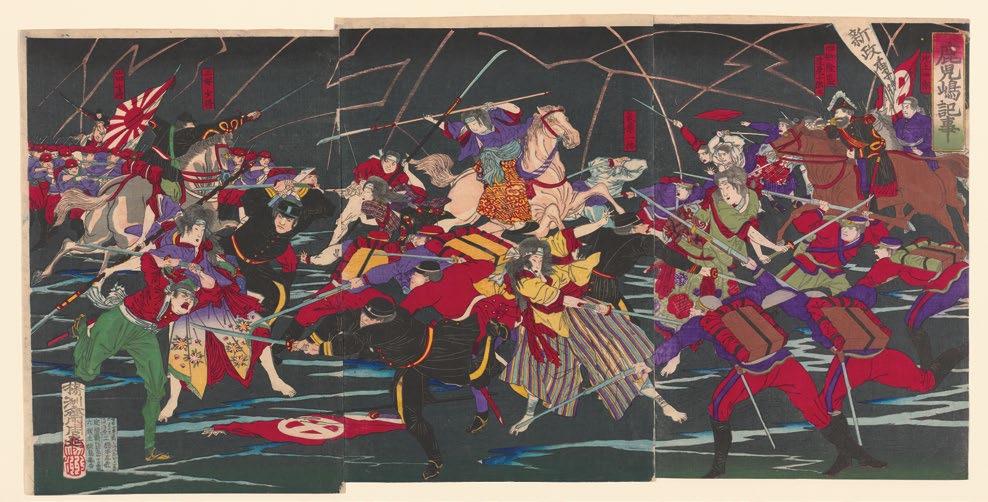
Samurai culture and history are complex and nuanced. As an archaeologist who studies ancient Egypt and Sudan, I was not surprised, but it was even more complex than I thought, and it was something I wanted to showcase in the exhibition. I wanted to go beyond the man, his armor, and his sword—typically the focus of samurai exhibitions—and present the samurai as multifaceted and evolving. A whole lot more than military training went into the making of a samurai warrior.
I found the cultural aspect of samurai life really interesting. We can easily imagine a samurai wielding a sword, but it’s harder to visualize a warrior hosting a tea ceremony or thoughtfully creating a floral arrangement. Deeply rooted in Buddhism, many of these cultural practices were a
way for samurai to compete in the social sphere, seeking distinction from their peers away from the battlefield. Both chanoyu (the tea ceremony) and ikebana (the art of floral arrangement) are discussed and illustrated with objects like tea bowls and Ming vases of the type collected by wealthy samurai for these cultural pursuits. These broader patterns of politics and social competition are integral parts of what made a samurai warrior.
Another aspect of samurai life that I wanted to showcase is the role of women. The samurai tradition was organized not around heroic individuals but families, and women played significant—if largely hidden—roles in the careers of famous male samurai leaders. Women were instrumental in the perpetuation of lineage and not
Yōshū Chikanobu, Women warriors at Kagoshima, Meiji period, 1877, color woodblock print on paper, 14.6 × 29.1 in., The University of North Carolina at Chapel Hill, Ackland Art Museum, The Gene and Susan Roberts Collection (2021.51.12a–c)
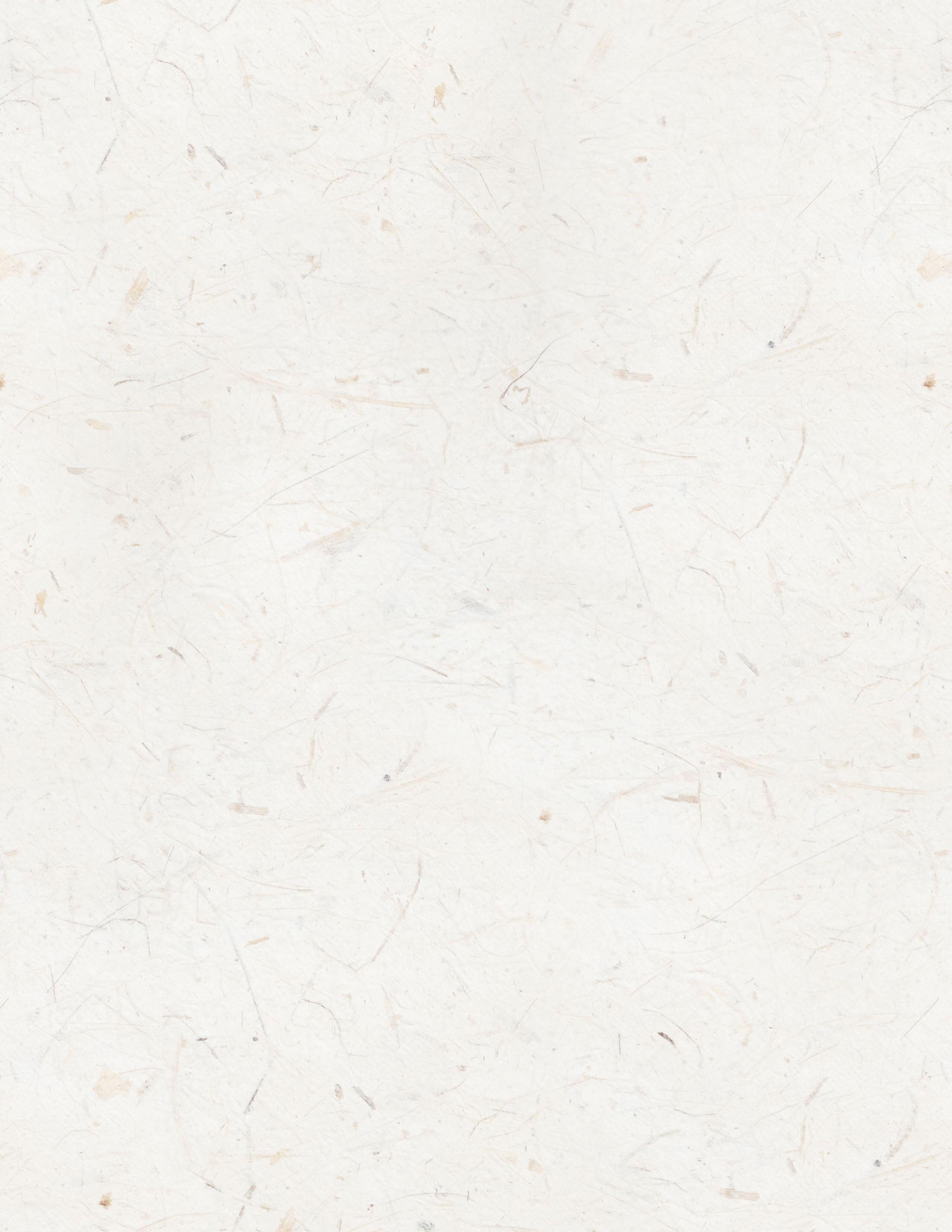
Through February 2, 2025
East Building, Level B, Joyce W. Pope Gallery
TICKETS
Reserve at ncartmuseum.org/Samurai free for Members
only managed the household but also saw to its protection. Indeed, women of samurai families were trained in hand-to-hand combat to defend their homes. Some were also warriors in their own right and bravely fought alongside men on the battlefield. A rare few were extremely powerful and influential. Visitors will be able to discover some of these samurai women in the digital label found alongside objects in a thematic display, one of six deep dives that bring more nuance to the four main sections.
Samurai: The Making of a Warrior is thus an invitation to explore something with which we’re broadly familiar—the samurai warrior—and to expand our knowledge and gain a better understanding of samurai life and culture.
Through January 5, 2025, Samurai: The Making of a Warrior and Venice and the Ottoman Empire are ticketed together. From January 5 through February 2, Samurai: The Making of a Warrior will be open on its own.
Questions about ticketing? Email help@ncartmuseum.org.
Organized by the North Carolina Museum of Art.
This exhibition is made possible, in part, by the North Carolina Department of Natural and Cultural Resources; the North Carolina Museum of Art Foundation, Inc.; and the William R. Kenan Jr. Endowment for Educational Exhibitions. Research for this exhibition was made possible by Ann and Jim Goodnight/The Andrew W. Mellon Foundation Fund for Curatorial and Conservation Research and Travel.
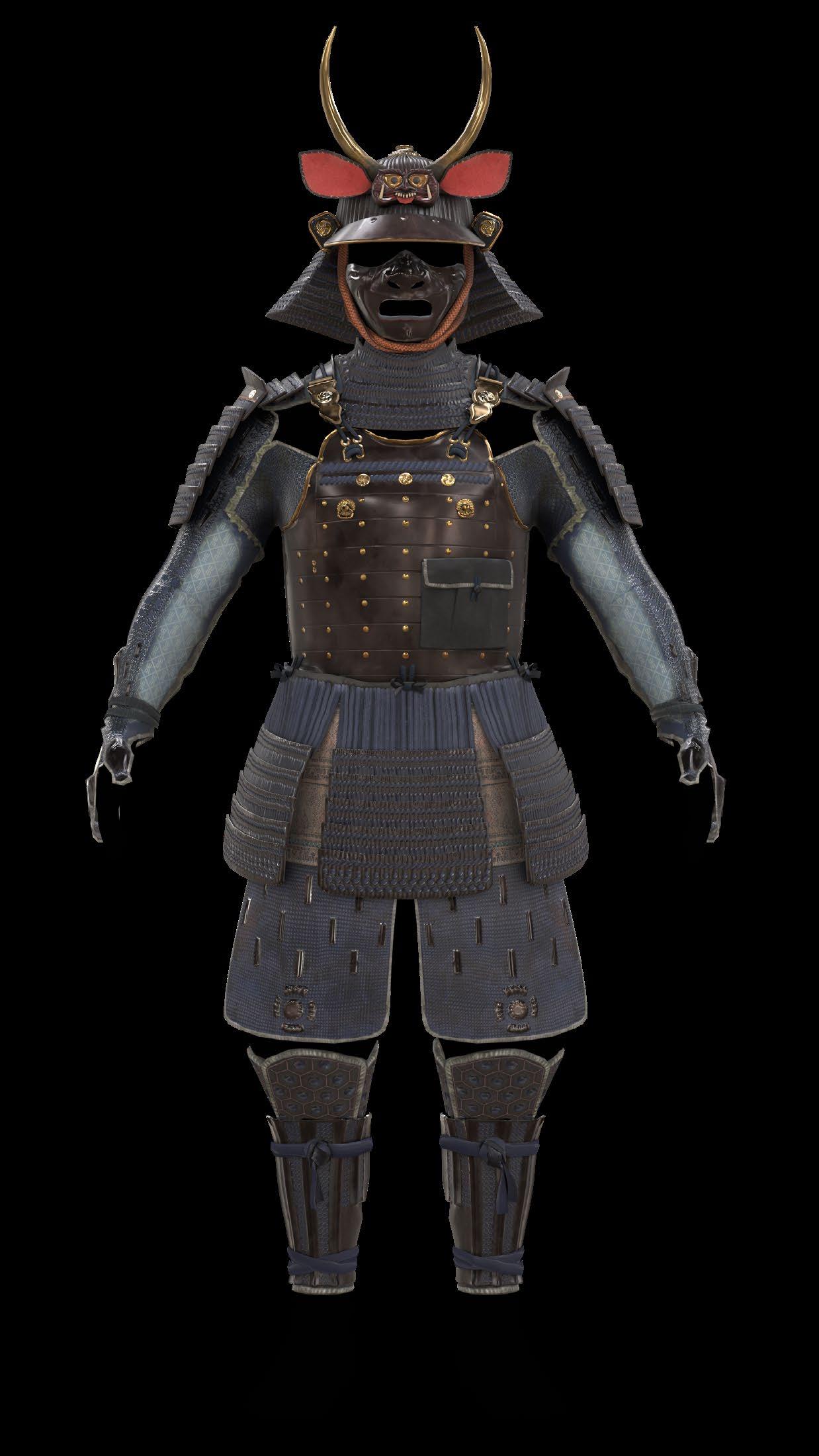
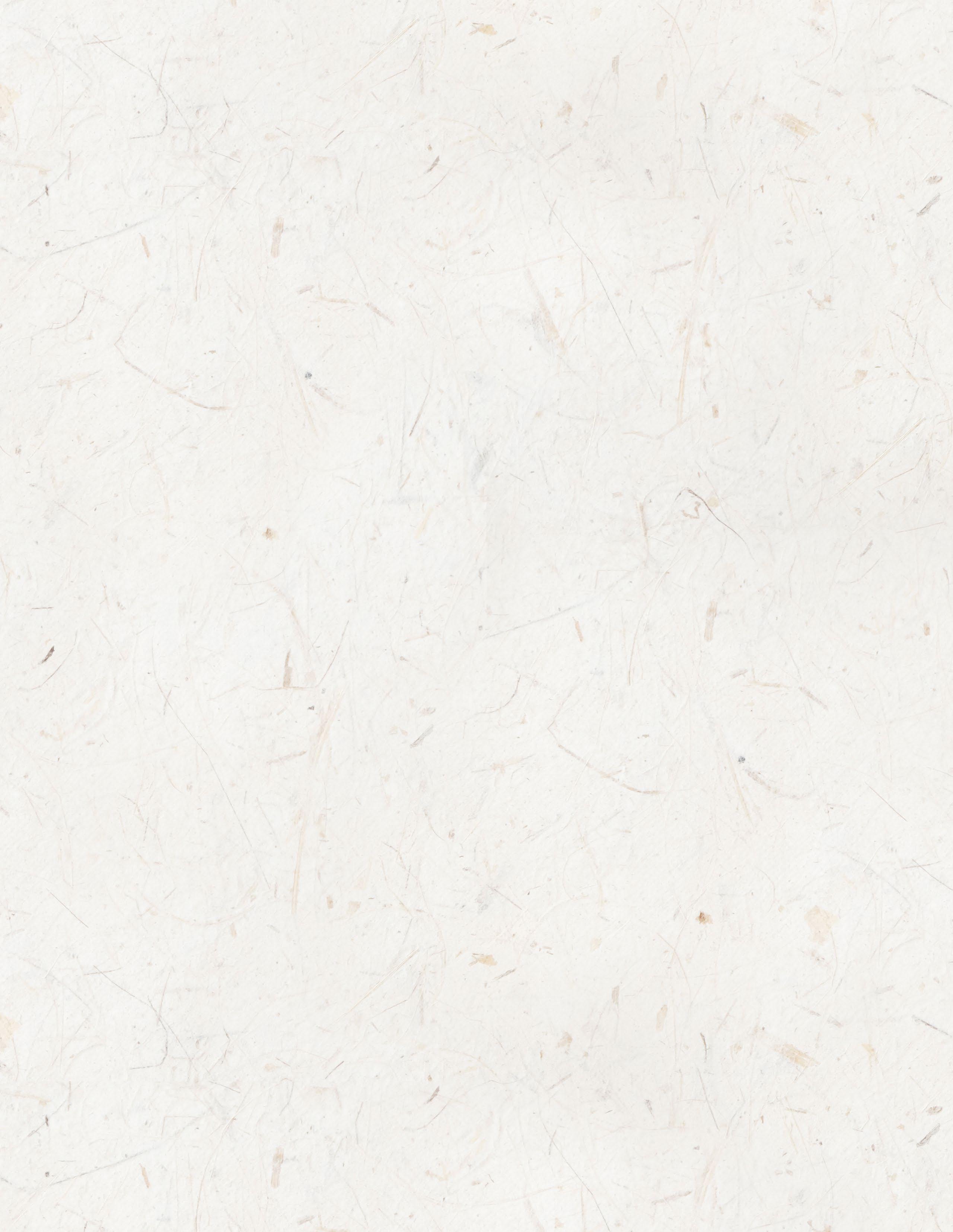
Imagine you are a samurai wearing this intimidating set of armor and going into battle. When facing an enemy’s dangerous weapon, could you survive?
Visit the exhibition Samurai: The Making of a Warrior to find out. By playing the in-gallery game Is Your Armor Battle Ready?, you can virtually suit up in warrior style, selecting your own gear from objects in the show. Choose your half-mask, shin guards, helmet, and breastplate. Pick from over 362 possible armor combinations and six different enemy weapons to go up against. Learn your fate, whether it’s life, death, or inglorious injury
Not all samurai armor were matching sets. Sturdy components that survived battles could be handed down through generations. Helmet bowls were frequently remounted and used in later periods.
Over the centuries the breastplate evolved with military tactics and new weapons. Which of the following weapons do you think had the most impact on the evolution of samurai armor: bow and arrows, sword, firearm, or spear?
Samurai armor offered great mobility because of the way it was constructed. Components could be made of sturdy metal plates of various sizes or mail; they could be laced or riveted together.
Not all samurai wore suits of armor with all the components you see here (this depended on their status and role on the battlefield). Do you think a warrior really needed all that protection?
When samurai suited up, they started from the feet and legs and worked their way up. The ornament on the helmet was the last thing that went on. A full suit of armor weighs around 50 pounds.
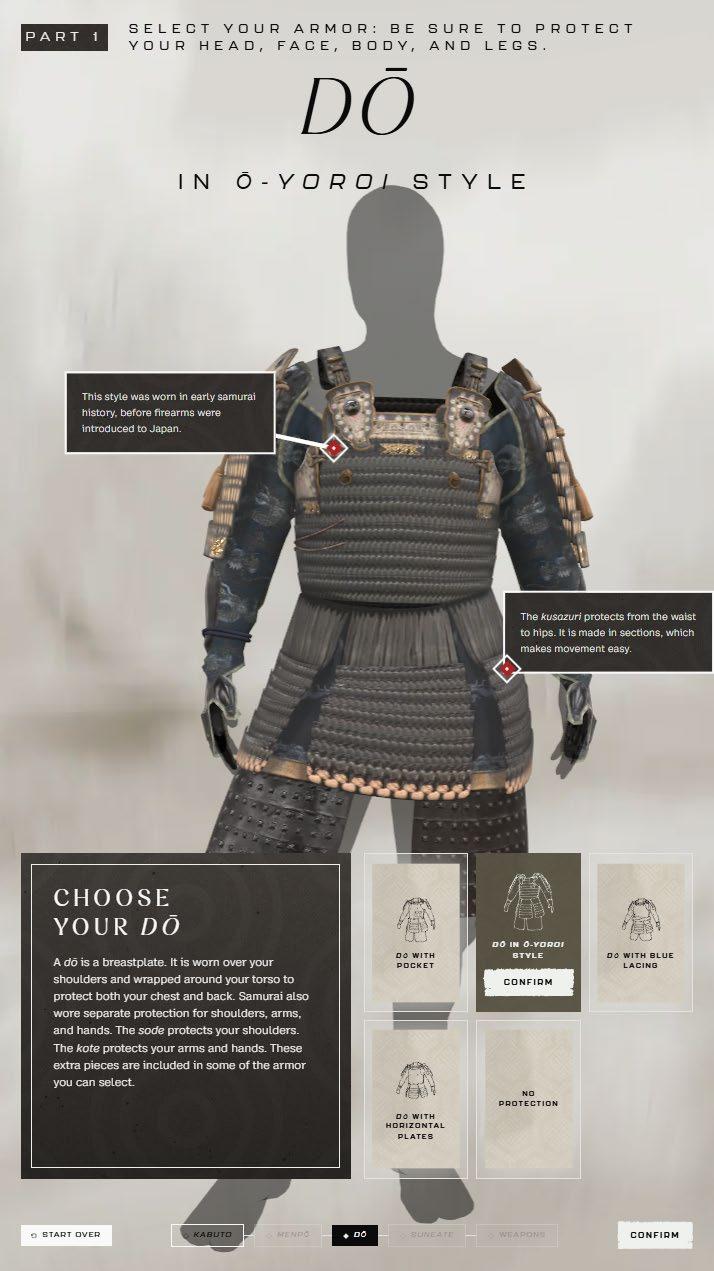
Developed in partnership with the Chattanooga-based digital agency Triptych, the interactive game renders samurai armor and weaponry in beautifully modeled and textured 3-D. Triptych’s designers painstakingly re-created the exhibition artifacts. The experience invites visitors to test the armor’s efficacy using state-of-the-art 4K touchscreen technology.
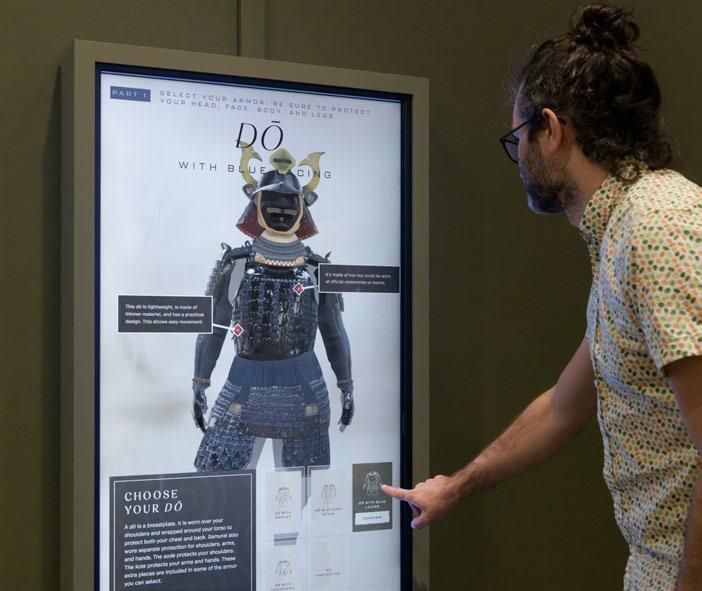
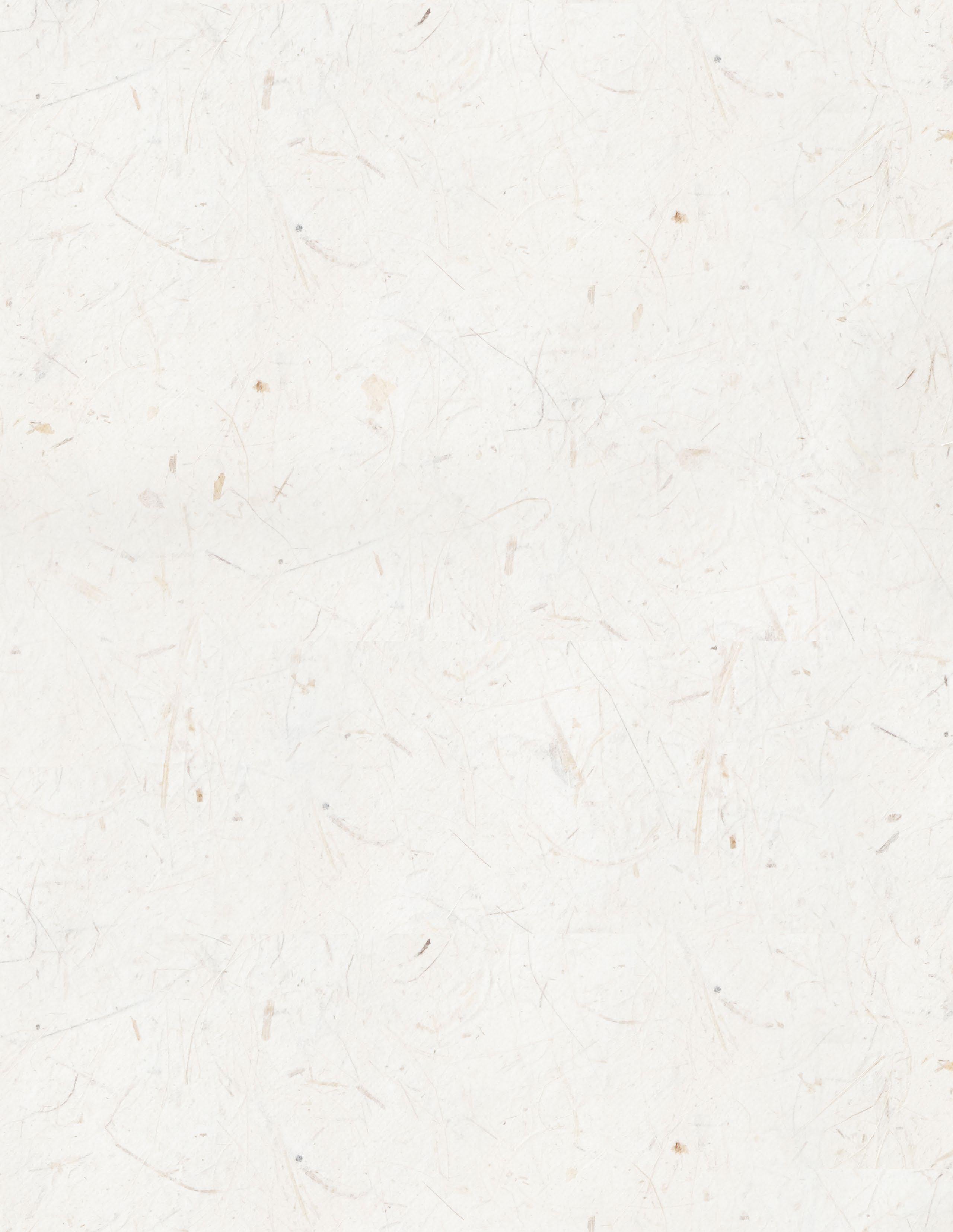
Among the highlights of Venice and the Ottoman Empire, on view at the Museum through January 5, are the many examples of luxury patterned cloths, seen both in the original and in secondary representations in paintings. Silks, satins, and silk velvets interwoven with gold and silver as well as modern fabrics printed to resemble older exemplars appear throughout the exhibition. Their omnipresence points to the importance of silk production and consumption both in Venice and the Ottoman Empire as well as the global circulation of textiles, via trade and gift traffic, throughout the four centuries covered by the show.
Venetian merchants were importing woven silks and raw silk from lands
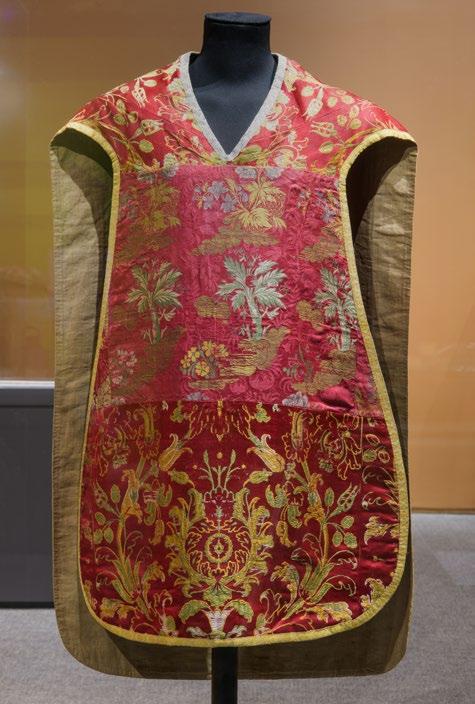
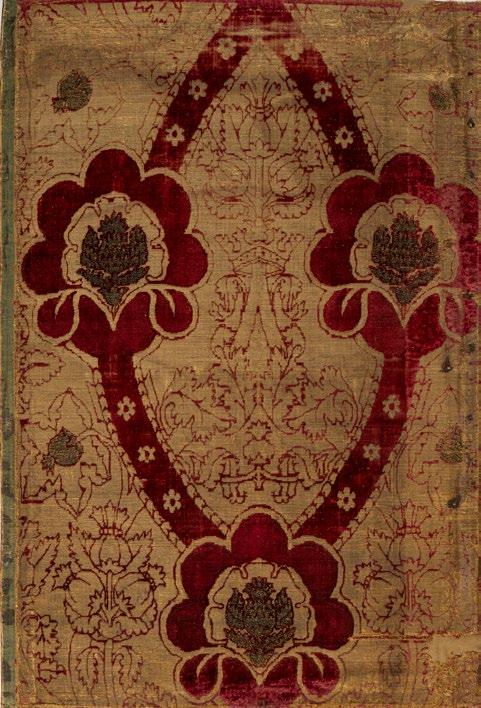
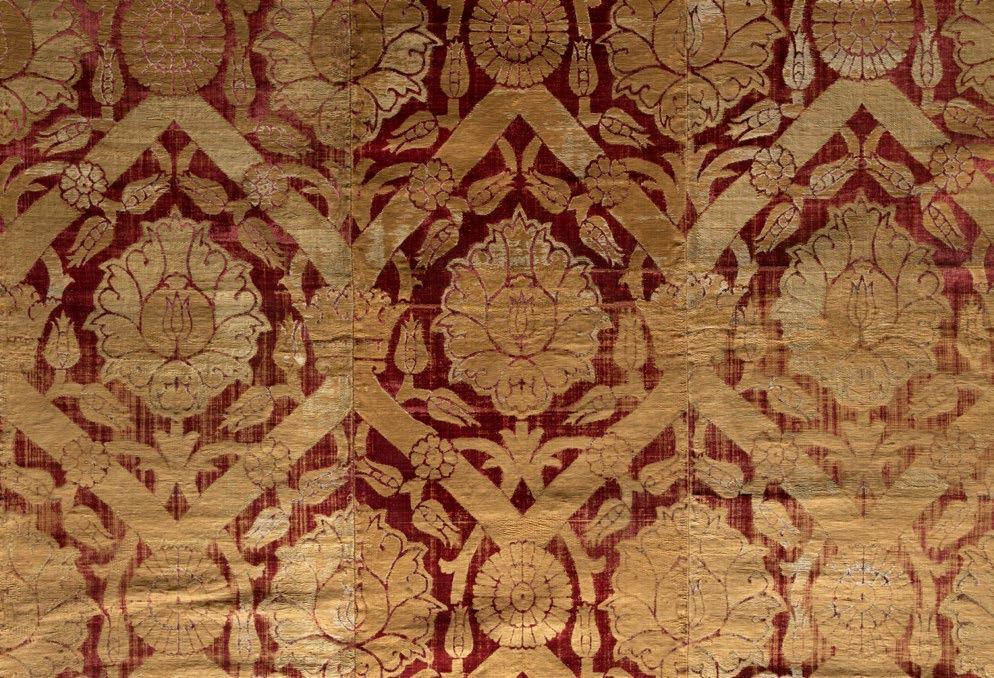
lyle
humphrey, Associate Curator of European Art and Collections History
surrounding the eastern Mediterranean by the 13th century, and a well-organized silk industry was established in Venice by 1300. Within a couple of centuries, Venice was one of the leading silk weaving centers in Europe. Venetian silks—whose patterns reflect the influence of foreign models— were being exported all over Europe as well as to Anatolia, where they were used to make ceremonial garments for the sultan and his court.
During this same period, Bursa, the first capital of the Ottoman state, rose to prominence as a weaving center. Its products were exported westward in large numbers through the same channels as eastbound Venetian silks. The reciprocal flow of goods resulted in extensive cross-pollination between Venice and Bursa. Some of the
21.7 in., Fondazione Musei Civici di Venezia - Museo di Palazzo Mocenigo, Cl XXIII n. 491/268
bottom: Ottoman Turkish craftsmanship in Anatolia, Velvet cloth, second half of 16th century, cut silk velvet, single harness, brocaded, lancé, 73.2 × 57.9 in., Fondazione Musei Civici di Venezia - Museo di Palazzo Mocenigo, Inv. Cini 823
material outcomes of this exchange are illustrated in the textiles discussed here.
Europeans used imported Ottoman silks for Christian altar furnishings and clerical robes. Sometimes European tailors combined Ottoman fabrics with locally sourced textiles. This is certainly the case in a chasuble, a sleeveless outer garment worn by a priest when celebrating Mass, on display in the Museo di Palazzo Mocenigo (page 6, top left). The upper and lower halves of the front and the entire back side are composed of an Ottoman silk satin with a pattern of tulips and lotus flowers, whereas the middle section is made of a European, possibly Venetian, fabric decorated with an unusual pattern of palm trees and flowering rocks.
The original application of a splendid fragment of crimson velvet cloth (page 6, top right) in late 15th-century Venice is unknown. The ogival layout created by velvet pile bands encompassing composite blossoms manifests the influence of Ottoman art. However, velvet weavers in Bursa never produced designs in which the ogival framework so completely dominated the pattern.
Venetian velvets like this had a profound impact on later Ottoman designs, such as the 16th-century brocaded velvet cloth with stylized flowers in a geometric latticework composition (page 6, lower left). The Bursa workshop reversed the color scheme—the ground is crimson and floral pattern gold. In keeping with Ottoman practices, they designed the pattern so that loom widths could be matched up and sewn together side by side.
Through January 5, 2025
East Building, Level B, Meymandi Exhibition Gallery
Reserve at ncartmuseum.org/Venice free for Members; ticketed with Samurai: The Making of a Warrior
Questions about ticketing? Email help@ncartmuseum.org.
Venice and the Ottoman Empire is organized by the Fondazione Musei Civici di Venezia and The Museum Box.
In Raleigh additional support is made possible, in part, by the North Carolina Department of Natural and Cultural Resources; the North Carolina Museum of Art Foundation, Inc.; and the William R. Kenan Jr. Endowment for Educational Exhibitions. Research for this exhibition was made possible by Ann and Jim Goodnight/The Andrew W. Mellon Foundation Fund for Curatorial and Conservation Research and Travel.
Today the Catalan surname Fortuny is synonymous with luxury textiles and the revival of historical motifs and patterns, especially the shared Venetian-Ottoman decorative vocabulary. Born in Granada, Mariano Fortuny spent most of his career as an artist and designer in Venice. His interest in historical textiles led him to develop methods for printing lightweight, modern fabrics that mimicked the uneven textures and light-reflective properties of Venetian Renaissance brocades. Around 1930 he designed a spectacular cope (ecclesiastical cape) whose floral patterns derive from Venetian and Ottoman silks in his own collection.
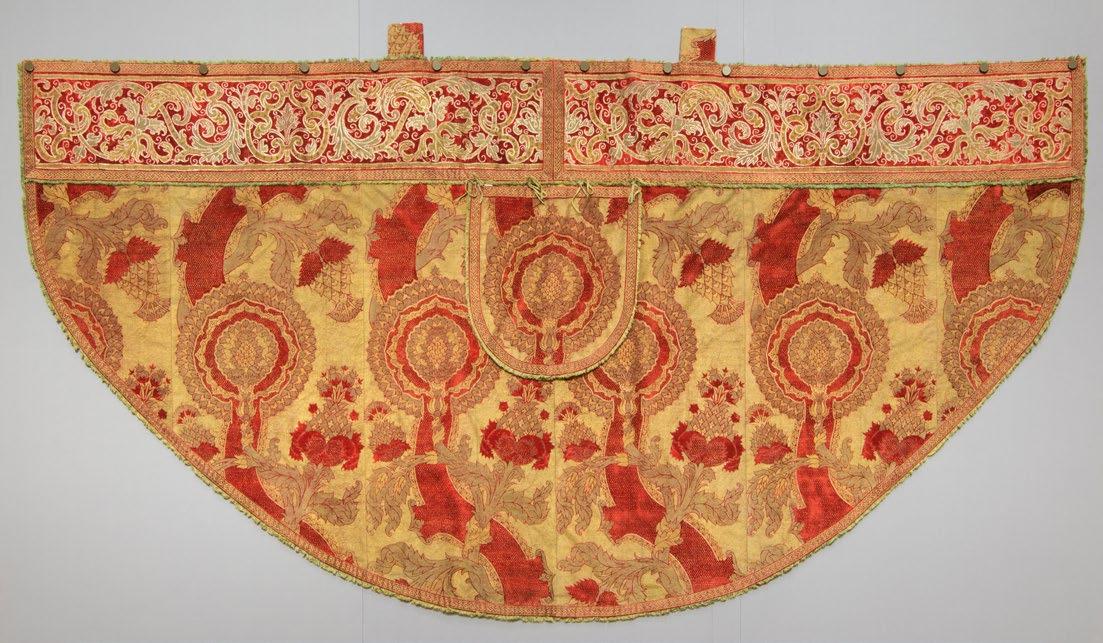
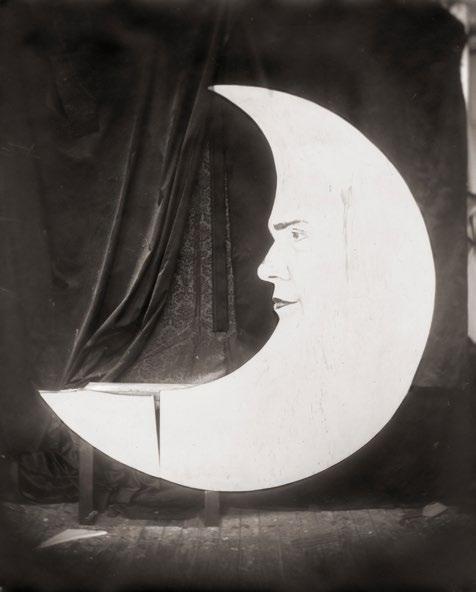
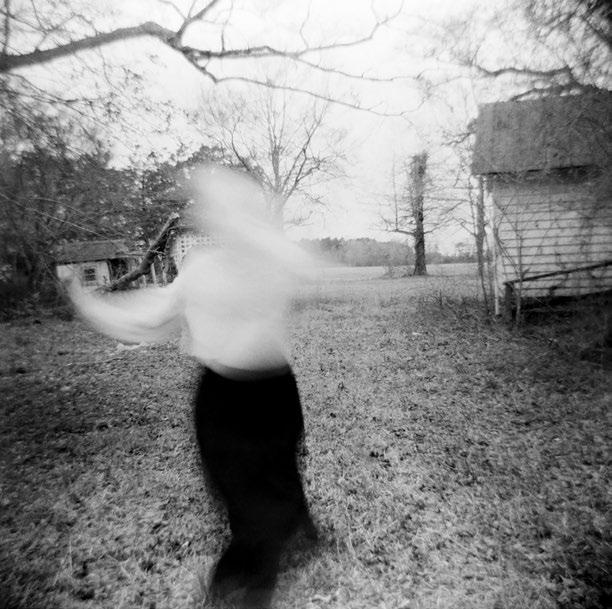
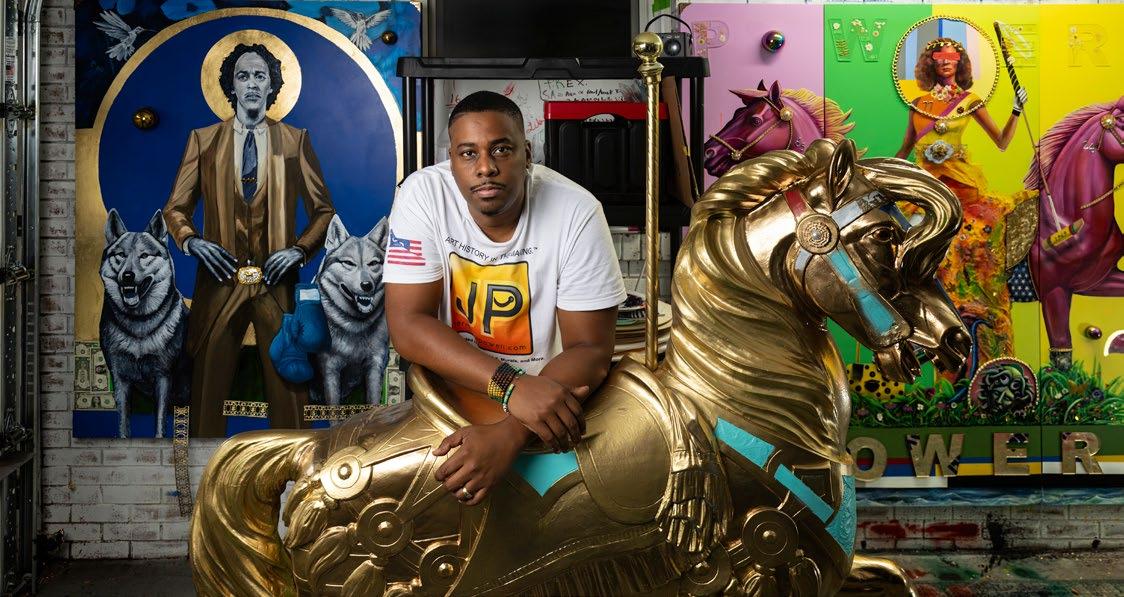
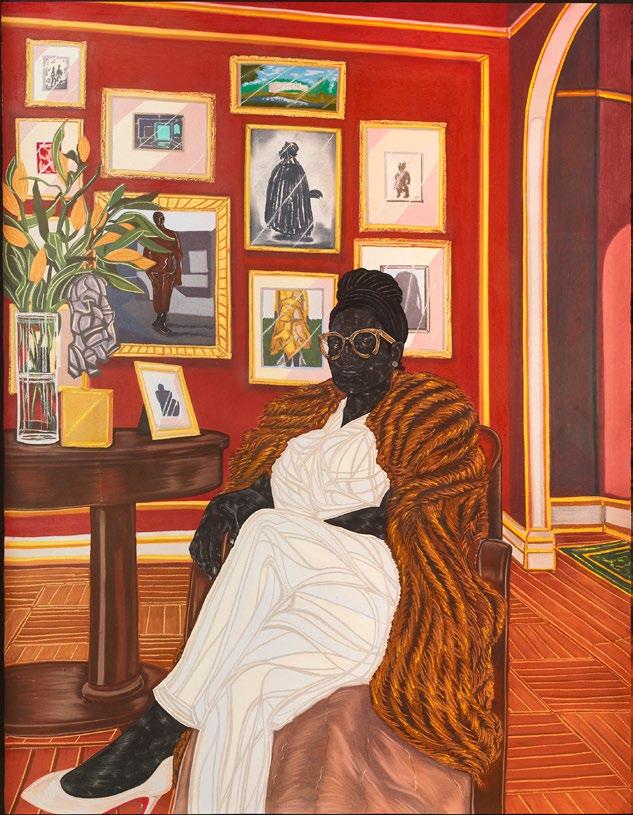
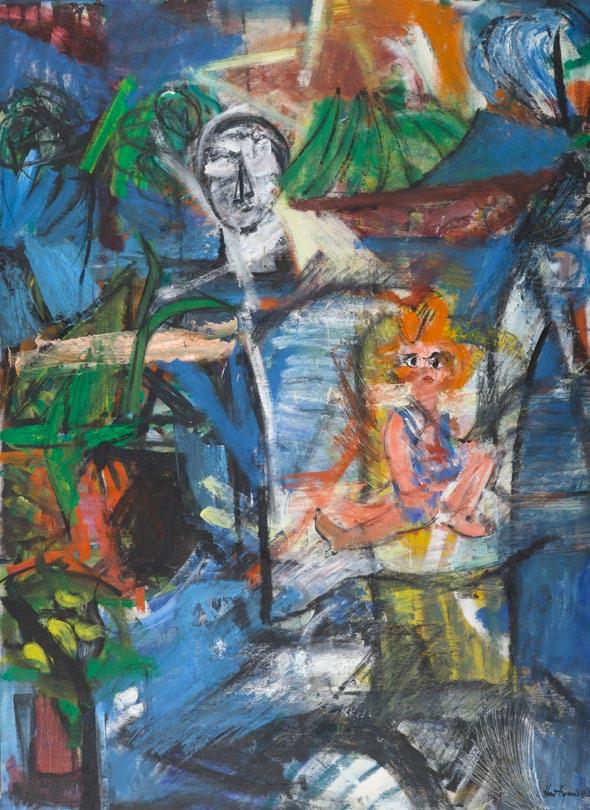
Photographs by Dan Estabrook
East Building, Level B, Photography Gallery 1 (Julian T. Baker Jr. Gallery) and 2 (Allen G. Thomas Jr. Gallery)
Through January 19, 2025
In an era in which we are constantly bombarded with images, where images and facts are manipulated and fabricated by artificial intelligence, Estabrook uses antiquated photographic processes that rely on the artist’s hand to create unique objects.
Dan Estabrook, The Moon, No. 1, 2020, gum bichromate print, 20 × 16 in., Courtesy of the artist
JP Jermaine Powell
Leadership Reimagined:
Share Your Journey
East Building, Level B, Gallery 3
Through March 9, 2025
This capstone exhibition of JP Jermaine Powell’s artist residency at the NCMA features a series of contemporary portraits of state and national arts leaders. It draws inspiration from the People’s Collection and highlights the Museum’s commitment to fostering the arts community and arts education in NC and beyond.
JP Jermaine Powell; Photo: Jonathan Fredin, Chief Photographer, S&A Cherokee
East Building, Level A,
Education Gallery
Through May 18, 2025
North Carolina attracts and nurtures many artists, as witnessed in this exhibition of MFA candidate work from across the state. Experimental, insightful, and anticipatory, the art on view introduces viewers to the wealth of talent being honed in advanced programs from Greenville to Cullowhee.
Katelyn Stanley, Running, Courtesy of the artist
East Building, Level B, Photography Gallery 1 (Julian T. Baker Jr. Gallery) and 2 (Allen G. Thomas Jr. Gallery)
March 1–July 20, 2025
Together with David LaChapelle: Dear, Sonja at the NCMA, Winston-Salem, David LaChapelle: Picture Show honors the artist’s journey over the past four decades. This two-venue survey includes his iconic staged tableau works and interpretive series, such as Stations of the Cross.
David LaChapelle, Death by Hamburger, 2001, pigment print, 40 × 60 in.; © 2024 David LaChapelle, Courtesy of the artist
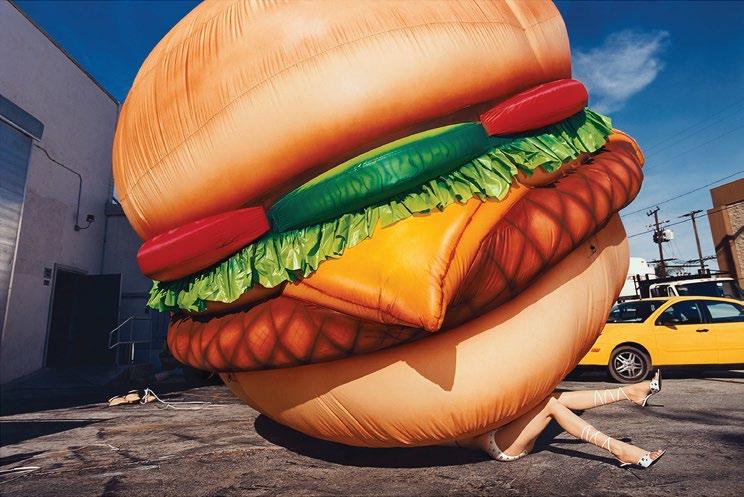
Time Is Always Now Artists Reframe the Black Figure
East Building, Level B, Meymandi Exhibition Gallery
March 8–June 29, 2025
This exhibition, curated by Ekow Eshun, brings together African diasporic artists working in the UK and US whose practices foreground the Black figure. It includes contemporary artists Michael Armitage, Njideka Akunyili Crosby, Noah Davis, Denzil Forrester, Claudette Johnson, Kerry James Marshall, Toyin Ojih Odutola, Nathaniel Mary Quinn, Amy Sherald, and Barbara Walker.
Toyin Ojih Odutola, The Marchioness, 2016, charcoal, pastel, and pencil on paper, 771/2 × 501/2 in., Promised gift of Pat and Tom Gipson
Grace Hartigan
The Gift of Attention
East Building, Level B, Joyce W. Pope Gallery
April 12–August 10, 2025
This show explores the significant impact midcentury American poets and poetry had on painter Grace Hartigan’s early career during the 1950s and 1960s. It highlights how key literary figures such as Frank O’Hara and Barbara Guest and their work sparked Hartigan’s creativity, providing a fuller examination of the art she created during this time.
Grace Hartigan, Interior with Mexican Doll, 1955, oil on canvas, 801/2 × 581/2 in., Gift of James I. Merrill
Has the foul weather got you down? Has the holiday rush put you in a sour mood? The Museum offers plenty of activities and programs to lift your spirits until spring is on the horizon.
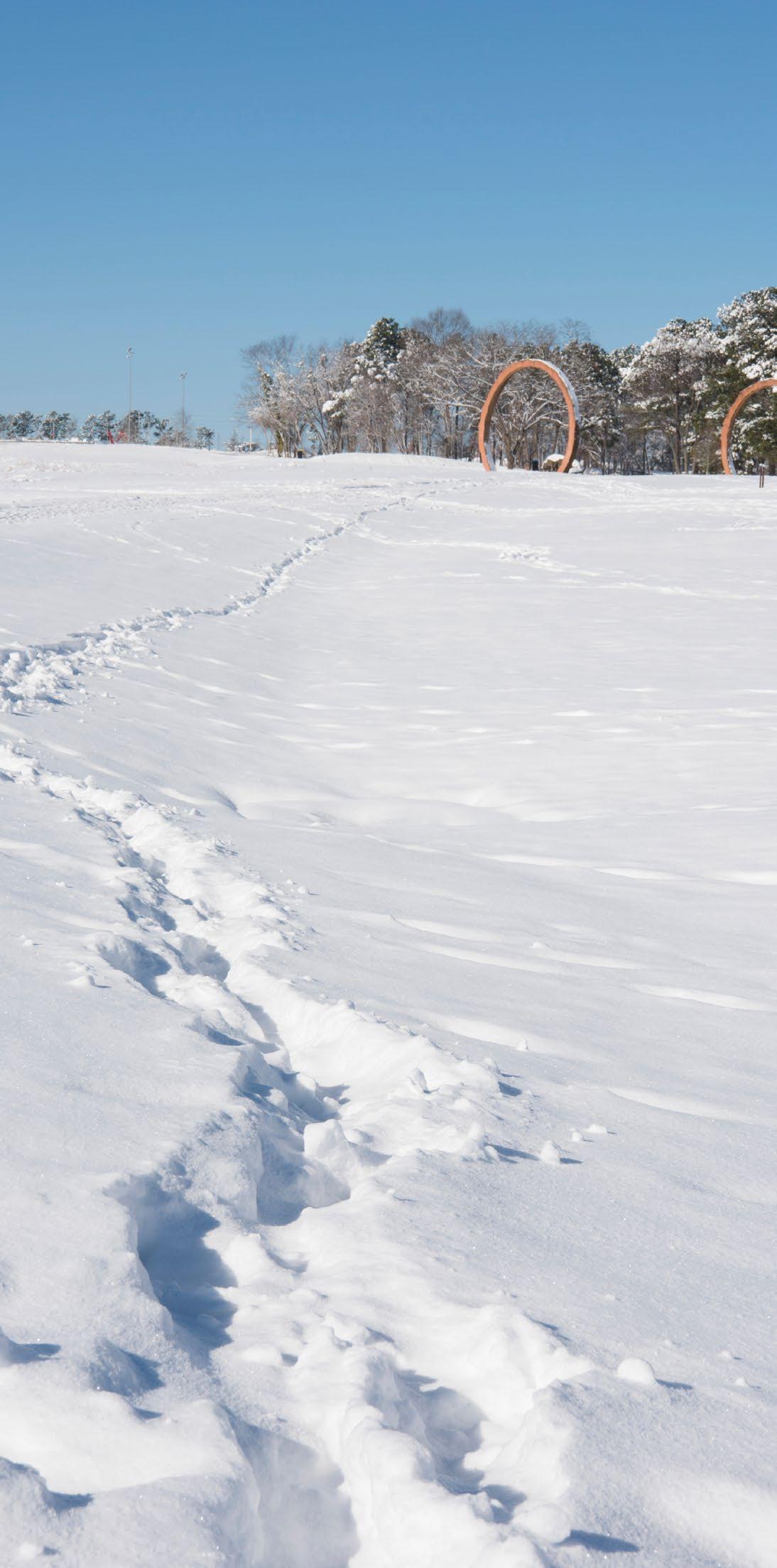
When it’s cold outside … warm up inside and ignite your curiosity.
Bring family and friends in town for the holidays to an afternoon of fun activities in East Building. Work to solve a museum mystery; play Artspeak, an Apples to Apples–style card game; and participate in a poll by selecting a souvenir button at the Choose! play station.
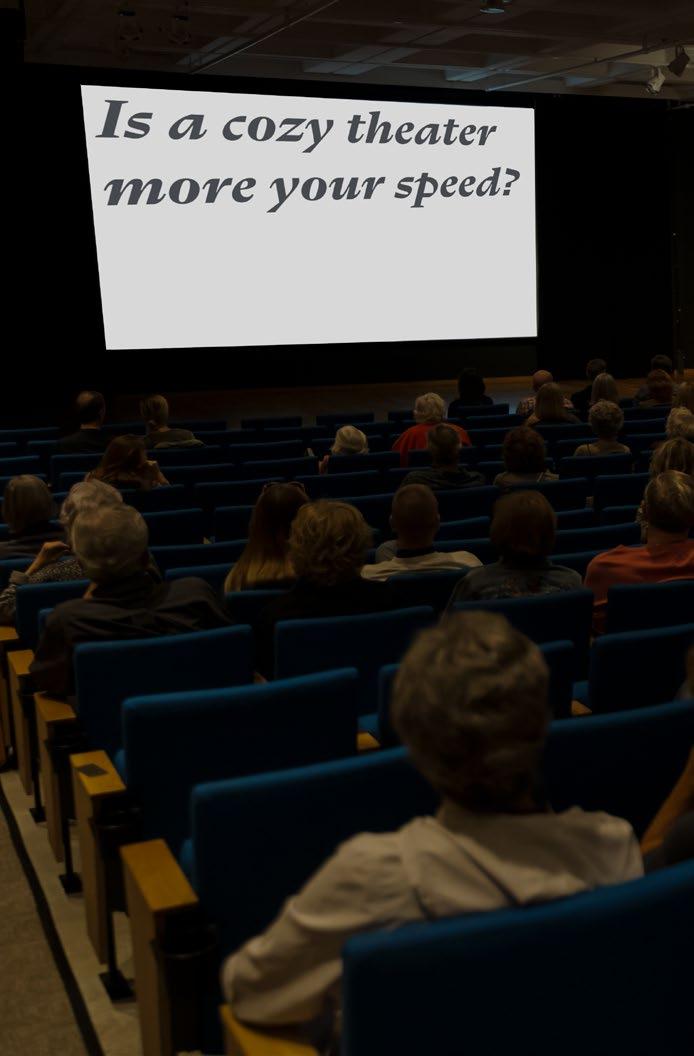
Saturday afternoon flicks at NCMA Cinema are the answer. (See page 18 for all the details.)
December 7 Summertime (1955)
January 11 Babes (2024)
January 18 Seven Samurai (1954)
January 25 Gods of Mexico (2022)
February 8 Soundtrack to a Coup d’Etat (2024)
February 22 Family Tree (2024)
When it’s dark early … go on a magical stroll or spend a night at the Museum.
Spend those extra sunless hours in community on the NCMA’s campus. We’ve got something artful for everyone.
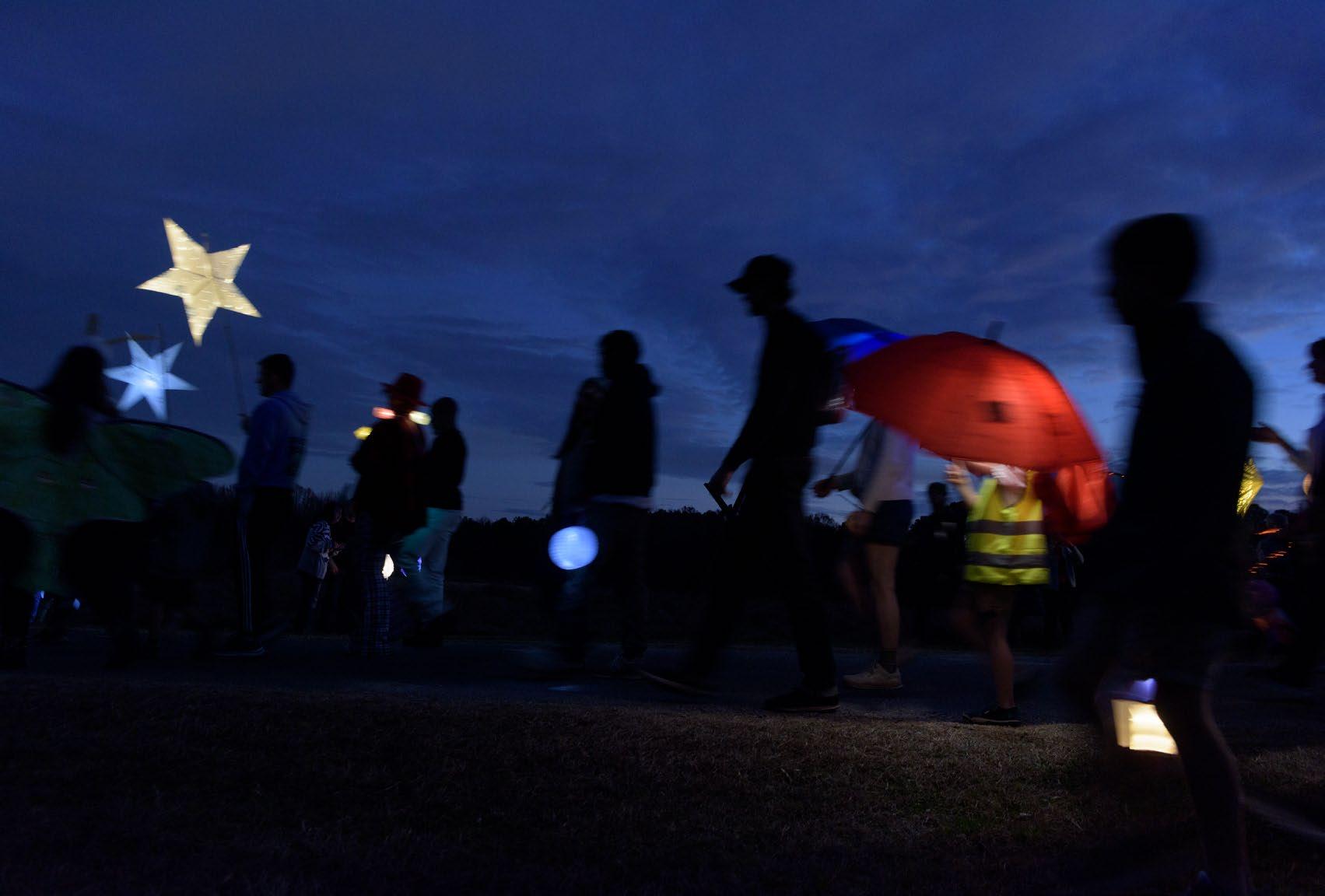
Winter Lantern Walk
Saturday, December 14, 4:30–6:30 pm free with registration
Shine your light at our annual lantern walk! Bring a homemade lantern and come together as we honor the quiet beauty of the approaching winter season with a magical paper lantern procession through the Museum Park.
NCMA After Hours
Thursday, February 13, 5–9 pm free
Spend time at the Museum once your workday is over. Meet up with friends for a pre-Galentine’s night out, join artist tours of love-inspired works, listen to live music, take part in art making, and browse the Museum Store.
These Mindful Museum offerings provide a space for escape and respite.
Singing Bowl Sound Bath
Wednesday, December 4, January 8, February 5, 6–7 pm
Ticket purchase required
Enjoy a restorative sound bath in the peaceful setting of our galleries. Sound baths are a meditative practice that use resonant instruments, such as crystal bowls, to calm the nervous system, decrease stress, and enhance rest.
Winter Slow Art Appreciation
Wednesday, December 18, 6–7 pm free with registration
Slow art is a practice to mindfully observe and communally appreciate art. Participants are guided through a brief centering practice followed by an intentional observation and discussion of a single work from our collection.
NCMA After Hours Dinner
Thursday, February 13, 5–9 pm
Ticket purchase required
Delight in a romantic three-course, fixed-price meal with classical French flair. Wine, cocktails, and beverages are available on site for purchase.
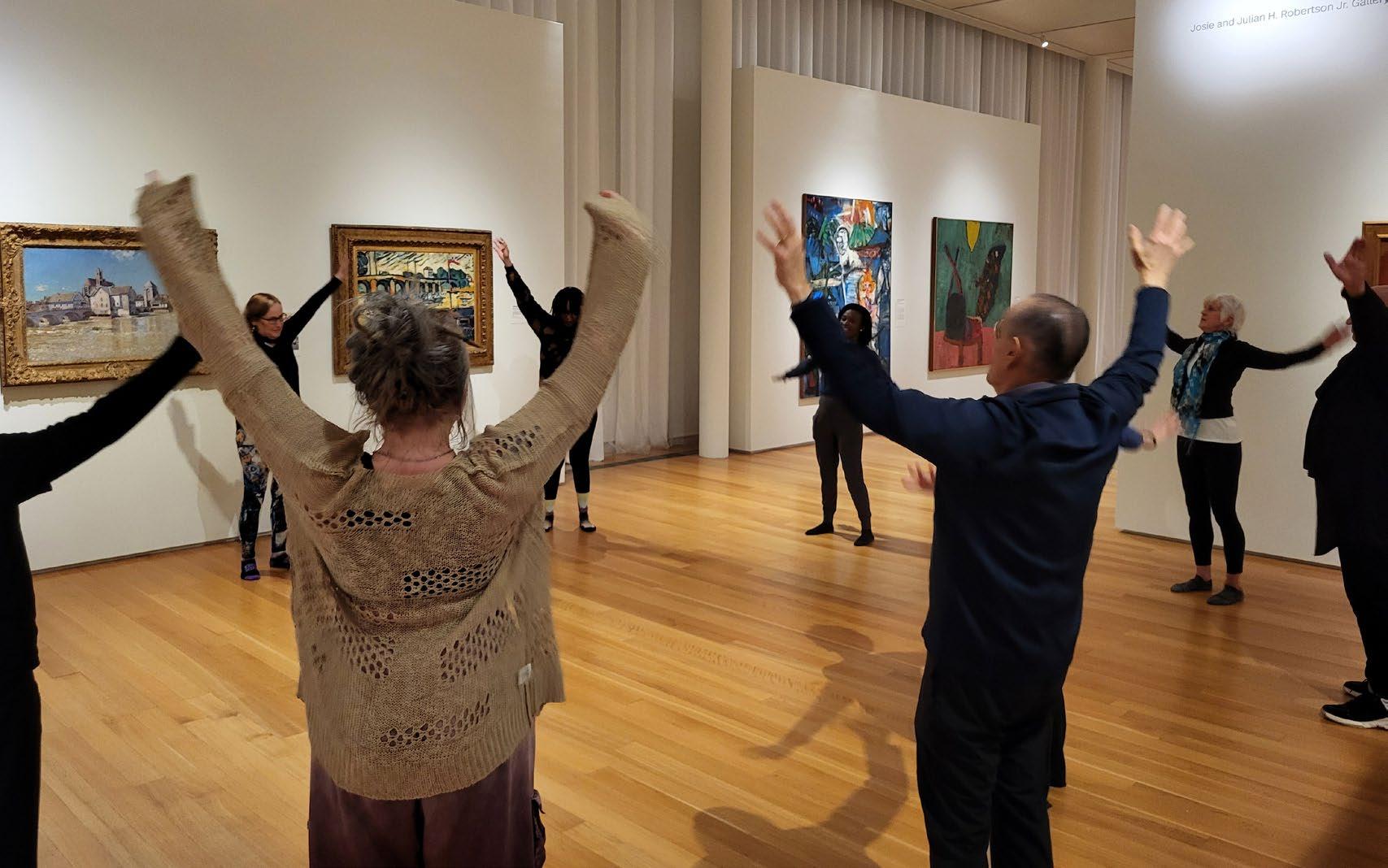
Winter Creative Self-Care
Wednesday, February 19, 6–7:30 pm
Ticket purchase required
Take time out to connect with yourself and the season through art and free expression. We provide a variety of art-making materials and other tools to guide you through this creative exploration of selfcare and community connection.
Editor’s note: Tashae Smith started her new role as assistant curator of African art this past August. I sat down with her recently to discuss her background and her immediate and long-term plans for the NCMA’s African art collection.
Laura Napolitano: Tell us about your academic and curatorial background.
Tashae Smith: Sure! In 2013 I attended Manhattanville College in Purchase, New York, where I studied history and museum studies. After graduating with my bachelor’s degree, I took a year off to work in a maritime museum. Although I wanted a museum career, I had never worked in a museum as a full-time employee. Taking that year prepared me for my master’s program in museum studies at the Cooperstown Graduate Program in Cooperstown, New York, which I completed in 2020.
I would say my curatorial background is rooted in 19th- to 20th-century African American history. I crafted my academic studies and previous curatorial projects and internships toward a career as a history curator. My focus started to shift toward art while attending graduate school. Thanks to a three-year curatorial fellowship at the Chrysler Museum of Art (CMA) and Hampton University Museum (HUM), it completely shifted to African art in 2021.
What is your specialization within the field of African art history?
My specialization is modern African art. During my time as a curatorial fellow, I immersed myself in the HUM’s modern African art collection (early to mid-20th century) and the CMA’s indigenous, or traditional, African art collection. Using works from these two valuable collections, I created two exhibitions, Sankofa: Constructing Modern African Art and I Am Copying Nobody: The Art and Political Cartoons of Akinola Lasekan. Sankofa captured how modern African artists reclaimed the past for the future by using indigenous art forms to construct art for the age of African independence and globalization. These artists also presented the unique beauty of the African landscape and its numerous ethnic cultures, birthing new artistic identities formed by deeper connections to their own or a foreign cultural heritage. I Am Copying Nobody presented the artwork of Akinola Lasekan, a pioneer of modern Nigerian art. He used his paintings to capture the beauty and humanity of Nigeria and its people while simultaneously attacking the British colonial system through his political cartoons.
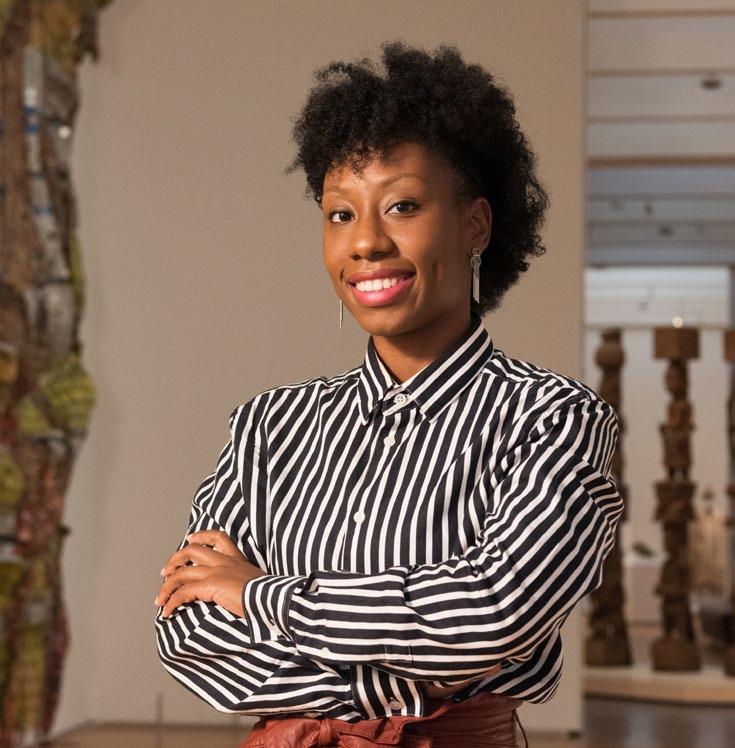
What are you looking forward to in working with the NCMA’s collection?
This is a great question! I am looking forward to expanding the NCMA’s African art collection with more modern and contemporary works by African artists. I believe visitors have enjoyed seeing the juxtaposition of traditional and contemporary artworks in the African art galleries. I wish to add to this to continue to broaden our idea of what African art is and what it looks like.
What are some of your immediate plans and more long-term goals in your new role as assistant curator of African art?
My immediate plan is to get familiar with the NCMA’s African art collection. My long-term goals are more general right now. They include acquiring more modern and contemporary African artworks, changing some of the installations in the African art galleries, and curating shows using the wonderful collection we have here.
Could you describe one (or more) of your favorite works in the collection so far?
That is a tough question because there are so many great pieces in the African art collection. Currently, my favorite is a set of three veranda posts by Nigerian artist Lamidi Fakeye. While researching Fakeye for my previous exhibition Sankofa, I often viewed these posts on the NCMA’s website. You can imagine my excitement when I got the opportunity to view the posts in person. I am a fan of Fakeye’s work, so seeing his art on this scale is truly a treat.

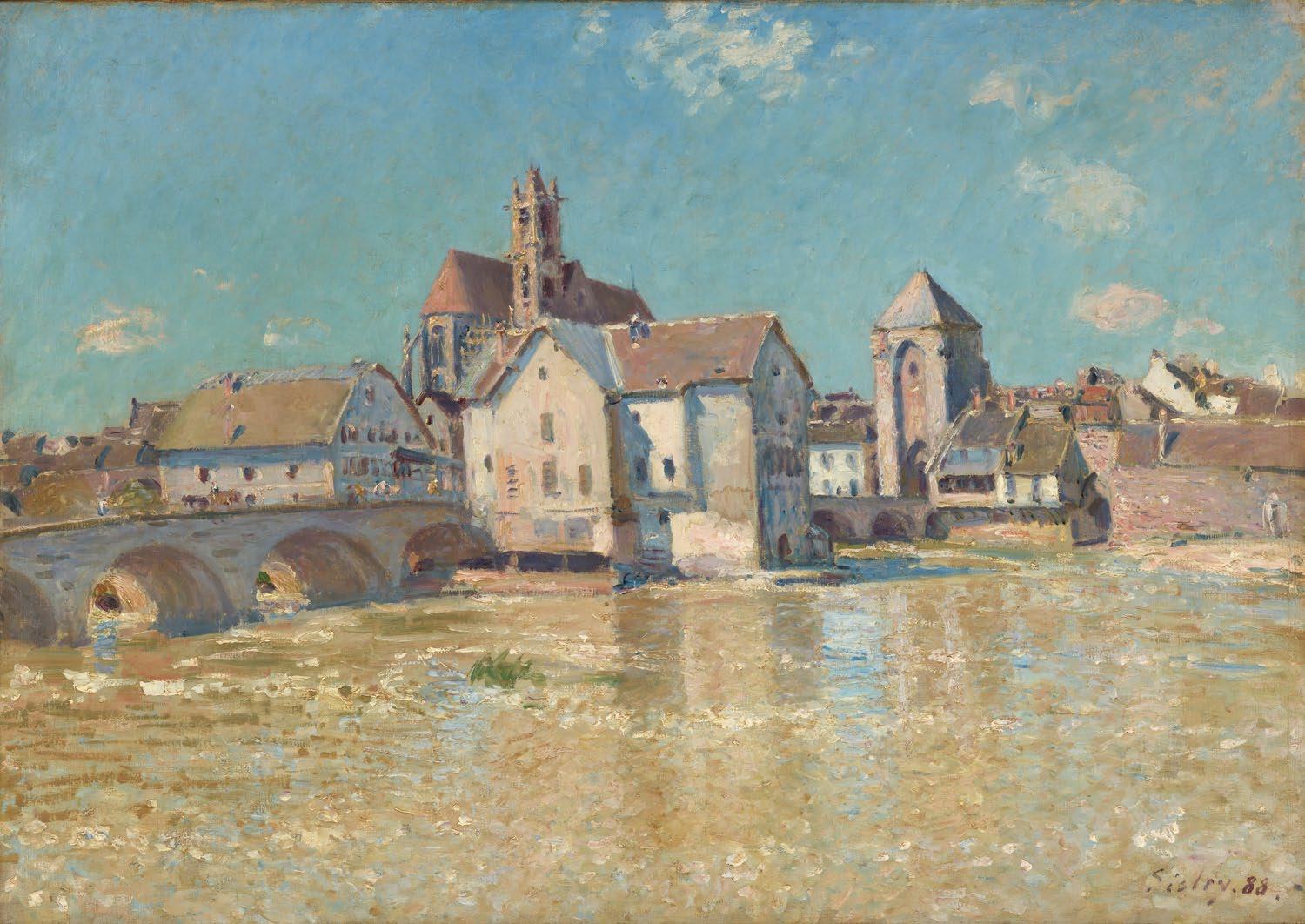
michele l. frederick Curator of European Art and Provenance Research
European modernism was long underrepresented at the NCMA until last year’s transformative gift from North Carolina native Julian Robertson and his wife, Josie. In addition to the Museum’s first Picasso, this significant gift includes a key impressionist landscape by Alfred Sisley and a vibrant nude by Kees van Dongen.
The impressionist painter Alfred Sisley was famous for his sensitivity to light and
jared ledesma Curator of 20th-Century Art and Contemporary Art
color. At his funeral his friend Adolphe Tavernier called Sisley “a painter exquisite and original among them all, a magician of light, a poet of the heavens, of the waters, of the trees—in a word, one of the most remarkable landscapists of this day.”
Here we see the clear and vibrant tones of an April morning in the small town of Moret to the southeast of Paris, where Sisley moved in 1880. Like many of his fellow
impressionists, Sisley found great inspiration in the French countryside, creating many variations of this idyllic view of Moret and other sites around the village. The two tallest buildings in this painting are famous medieval structures that still stand in the city today: the cathedral at left and the gate with a pointed roof at right.
This remarkable painting is an exceptional donation in several respects. It is
the first work by Sisley to enter the collection and expands our representation of impressionism’s reach beyond the northeastern region of Normandy, the location of all three paintings by Monet in the People’s Collection as well as those by Pissarro and Boudin.
Kees van Dongen was part of a group of early 20th-century artists in Paris known as the fauves—French for wild beasts. Alongside Henri Matisse and Maurice de Vlaminck, van Dongen used audacious colors and messy brushstrokes that challenged traditional French painting.
By World War I, van Dongen had earned “the unshakable reputation as a painter of sexy women,” writes art historian Aruna
D’Souza. He greatly admired women and is known for bold, erotic, and simplified works like Femme nue allongée. His choice of blue, green, ochre, and yellow to quickly form the model’s figure defies reality. A plate of peaches in the foreground adds depth and implies a metaphor for the female body.
Van Dongen’s painting was recently installed in a gallery titled The Artist’s Model. While models have played vital roles throughout art history as subjects, muses, and collaborators, their stories are often eclipsed by the artists themselves. This new installation features van Dongen’s nude alongside other works from 1900 to 1960 in which models and subjects
engage with themes of gender, heritage, and community.
The inclusion of Femme nue allongée in this presentation brings important attention to its sitter, who was likely a sex worker—a frequent subject in the artist’s late 19th- and early 20th-century works. Although van Dongen frequently painted sex workers, or what one art critic at the time called “the worst type of the underworld to be found in Montmartre,” he was known for his compassion and respect toward them. However, most stories from this era have been told through sources other than the women themselves.
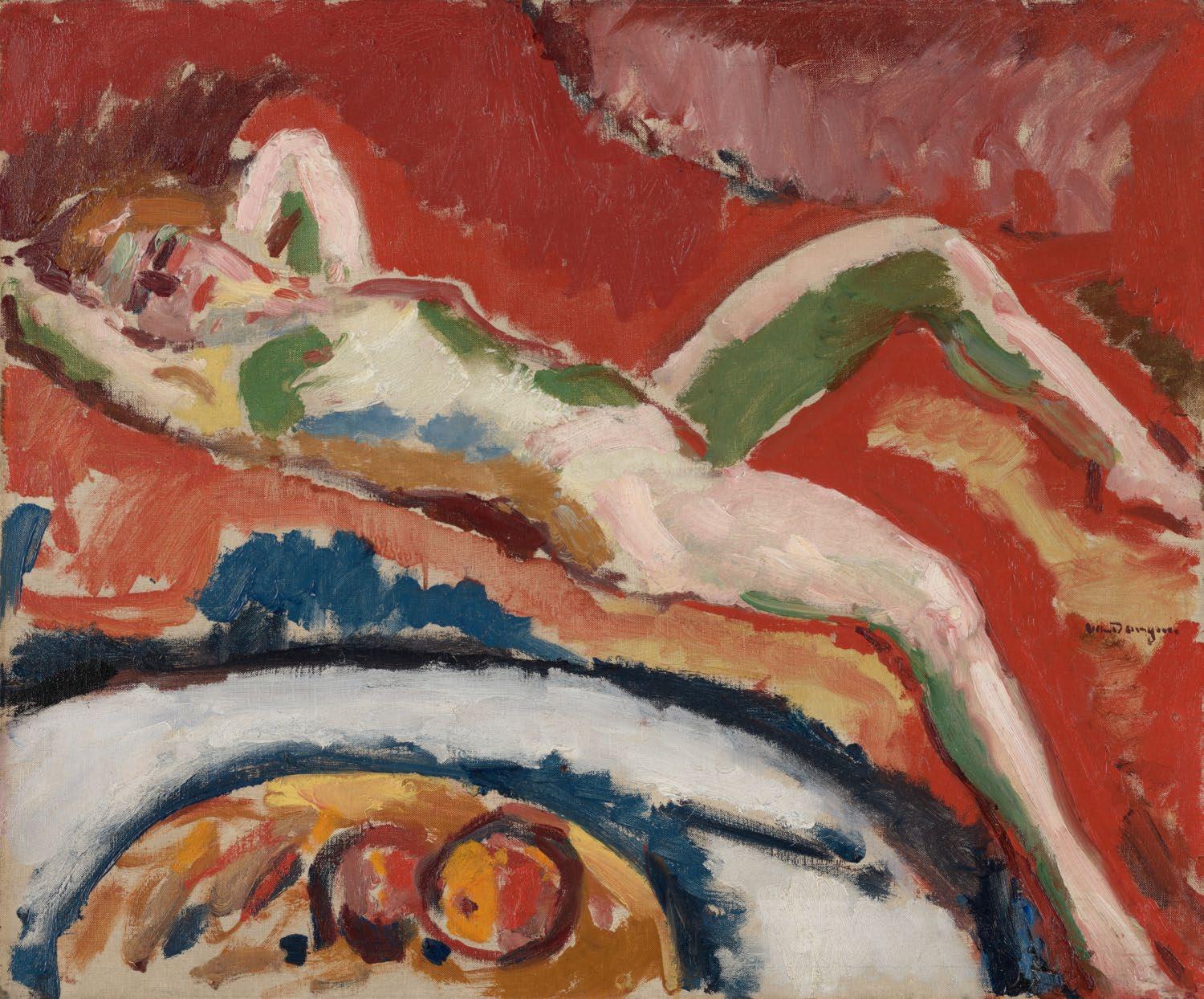
The Museum offers many types of accessibility accommodations for events and tours. To find out what is available or request an accommodation, contact Accessibility Coordinator Molly Hull, mhull@ncartmuseum.org. Please note that requests require a minimum two-week notice.
The events in My NCMA represent a selection of programs taking place at the Museum in December 2024 and January and February 2025. Watch for email newsletters and go to ncartmuseum.org/programs for details and to find more programs.
Gingerbread Tea
December 8, 15, 19–22, 10:30 am–3:30 pm
Ticket purchase required
Join us at the Gingerbread Tea to celebrate the holiday season. This family-friendly, festive afternoon tea features a variety of finger sandwiches, premium hot teas and cocoa, and savory and sweet treats.
exhibition related Member Monday
December 9, 10 am–3 pm free to members
This exclusive event offers members a private viewing of Venice and the Ottoman Empire and Samurai: The Making of a Warrior. Enjoy a relaxed, crowd-free experience with complimentary refreshments
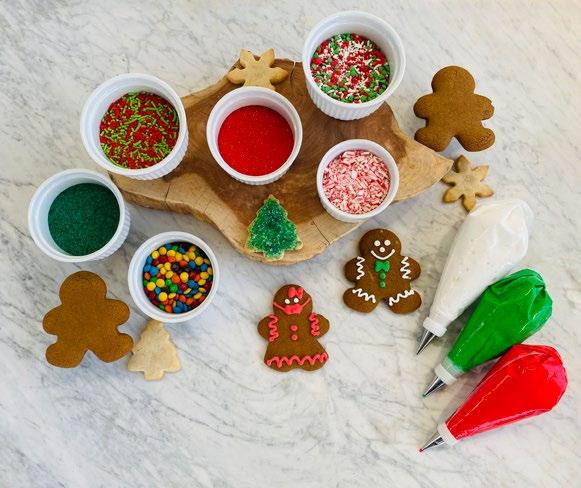
and special insights into these captivating exhibitions.
Patron Party 2025: Color Theory
Thursday, January 9, 7–9:30 pm
free with registration for Patron-level members and above
We kick off the year with a vibrant evening of food, drink, and dance. Indulge in culinary creations inspired by the color wheel, sip on a colorful cocktail, and boogie the night away. Come in your most colorful attire.
The Art Inside the Bottle: Seeing Red
Friday, January 24, 7–9 pm
Ticket purchase required
Join us for a sensory experience to explore the history, tradition, and process behind wine making and art making. Featuring art objects and outstanding wines with food pairings.
Humber Society Dinner 2025
Tuesday, January 28, 6–9:30 pm
By invitation to Humber-level members and above
Celebrate the joy of creativity and community at the annual Humber Society Dinner. Formal attire.
Participate in programs developed to give you meaningful avenues to explore the arts. Studio workshops give you time to create along with professional artists; lectures provide in-depth examinations of exhibitions and the Museum’s collection.
Tickets, registration, and additional events: ncartmuseum.org/adultprograms
Hone Your Voice:
Creative Writing at the NCMA
Thursday, December 5, January 9, February 6, 10–11:30 am
Ticket purchase required
Are you a creative writer? This is for you! Would you like to be? This is for you too! Participants respond to visual art in poetry or prose. Taught by Helena Feder.
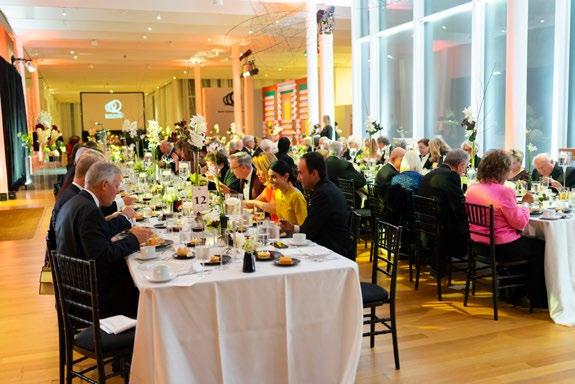
exhibition related
Marbling with Lisa Pearce
Saturday, December 14, 1–3 pm
Ticket purchase required
Participants create marbled papers perfect for card making, bookbinding, collage, and more. We’ll also explore the history of this ancient printmaking technique, which includes Japanese suminagashi, Turkish ebru, and European styles.
Drawing Meditation Workshop with Maureen O’Neill
Saturday, December 14, January 11, February 15, 10 am–noon
Ticket purchase required
In this workshop participants use guided drawing and painting to connect with the present moment. Become familiar with the healing and creative power of intuitive mark making. No art experience is needed.
The Happy Habit of Painting with Mónica Linares
Thursday, January 16, 23, and 30, and February 6 and 13, 10 am–12:30 pm
Ticket purchase required
Discover the joy of daily painting with Mónica Linares in this five-week class. The course has been designed to help you build a sustainable painting habit with expert guidance, motivation, and accountability.
Intro to Screen Printing with Robby Poore
Saturday, January 18, 1–4 pm
Ticket purchase required
Join artist and designer Robby Poore for an engaging class where you’ll learn techniques of hand-pulled screen printing. All skill levels are welcome.
Sculpture and Meditation Workshop
Saturday, January 25, 2–4 pm
Ticket purchase required
Engage in hands-on sculpting while practicing embodied meditation, which fosters relaxation and artistic expression. Led by sculptor and certified mindfulness instructor Meg Stein, this workshop invites participants into deeper self-connection. All skill levels welcome.
Museum-Inspired Anime with David Anyanwu
Saturday, January 25, and February 1 and 8, 11 am–3 pm
Ticket purchase required
Learn to draw anime like a pro. Join illustrator David Anyanwu (P-Shinobi) in this three-part digital-anime art course using Clip Studio, a powerful app available on both desktop and mobile.
humber lecture
Exploring the Masterpieces of Mesoamerica
Sunday, February 2, 2–3 pm
free with registration
Mesoamerica is a region that encompasses much of present-day Mexico and parts of Central America, with a history of four thousand years. This lecture delves into the cultures that emerged from these places, including the Maya, Aztecs, and Olmecs.
Historical Letter-Folding and Sealing Techniques with Sonia Pal
Saturday, February 8, 1–3 pm
Ticket purchase required
Learn historical letter-folding and sealing techniques in a workshop with artist Sonia Pal. Explore different methods and their histories, then apply them to your writing for a charming, unique touch.
exhibition related
Seeing Red:
The Art of Science and Technology
Sunday, February 9, 2–3 pm free with registration
How has red affected the world? Join us to learn how red dyes and pigments were among humankind’s first technologies and how they were at the center of major scientific milestones.
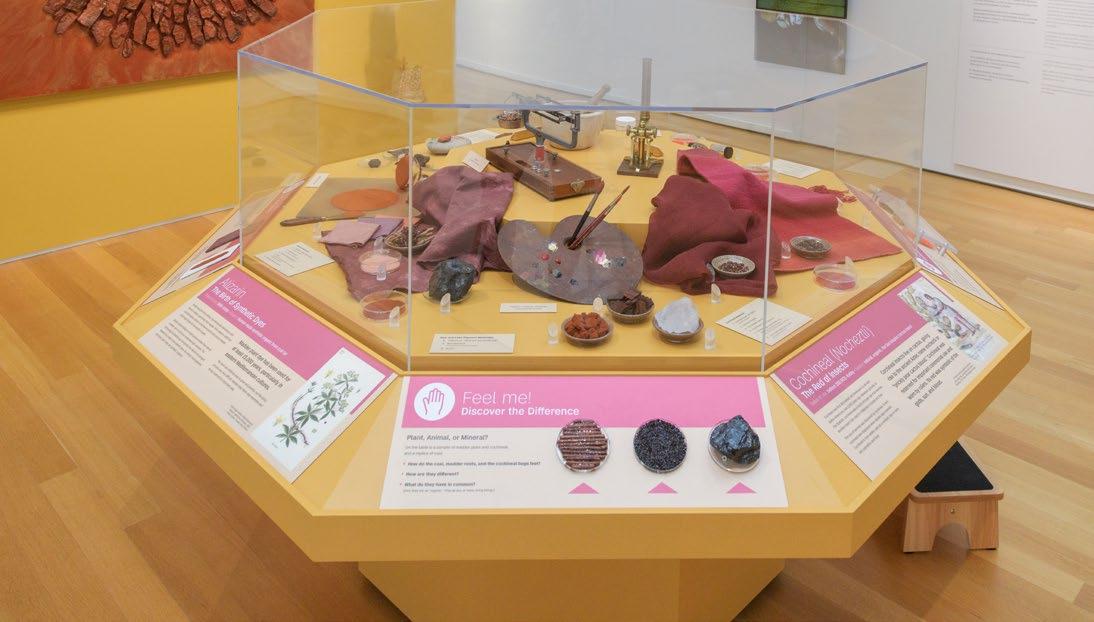
The Art of Drawing Animal Skulls with Patricia Savage
Saturday, February 15, 10 am–4 pm
Ticket purchase required
Students learn comparative anatomy with zoologist Adam Hartstone-Rose, then explore proportional measuring, gesture drawing, and value gradations using carbon pencils with Patricia Savage to bring skulls to life.
Mindful Museum programs offer opportunities to process emotions, cultivate inspiration, and find more connection both with art and our community. Every third Wednesday of the month features a rotating art-inspired mindfulness experience. Tickets, registration, and additional events: ncartmuseum.org/mindfulprograms
exhibition related
Sensory Journey through Art
Thursday, December 12, 7–8 pm
free with registration
Join curator Caroline Rocheleau for a virtual journey inspired by a suit of armor featured in Samurai: The Making of a Warrior. For adults who are blind, low vision, or have a learning need that would benefit from a sensory-style experience.
exhibition related Japanese Tea Ceremony
Sunday, January 12, 10:30–11:30 am, noon–1 pm
Ticket purchase required
Join us for an intimate, traditional Japanese tea ceremony in conjunction with the exhibition Samurai: The Making of a Warrior. This experience is led by experts in chanoyu, “the way of tea.”
Sensory Journey through Art
Thursday, February 13, 7–8 pm free with registration
Join Alex Brown, programming director at the NCMA, Winston-Salem, for a virtual journey inspired by art. For adults who are blind, low vision, or have a learning need that would benefit from a sensory-style experience.
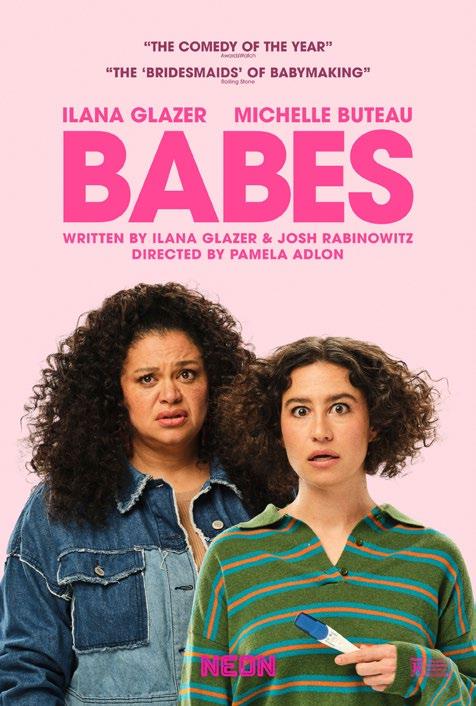
The Museum’s multigenerational performing arts and film programming cultivates belonging, cultural arts production, and the exploration of NC residents’ rich histories. Tickets, registration, and additional events: ncartmuseum.org/pafprograms
NCMA Cinema
Saturdays this winter Ticket purchase required
Summertime (1955)
Saturday, December 7, 2–3:45 pm
Directed by David Lean, 1 hr. 40 min., NR, comedy/drama/romance
An American’s dream of romance finally becomes a bittersweet reality when she meets a handsome but married Italian man while vacationing in Venice.
Babes (2024)
Saturday, January 11, 2–3:45 pm
Directed by Pamela Adlon, 1 hr. 44 min., R, comedy
Lifelong friends Eden and Dawn, one single and wanting a baby, the other already a mother, navigate challenges to their bond when Eden pursues pregnancy alone.
Saturday, January 18, noon–4 pm
Directed by Akira Kurosawa, 3 hr. 27 min., NR, action/drama
Farmers from a village exploited by bandits hire for protection a veteran samurai, who gathers six other samurai to join him.
Saturday, January 25, noon–1:45 pm
Directed by Helmut Dosantos, 1 hr. 37 min., NR, documentary
A poetic survey of the vast landscapes and rich diversity of several communities in rural Mexico, this film takes viewers through salt pans, deserts, highlands, jungle, and underground mines.
Saturday, February 8, 2–4:30 pm
Directed by Johan Grimonprez, 2 hr. 30 min., NR, documentary Jazz and decolonization are entwined in this historical rollercoaster that rewrites the Cold War episode that led musicians Abbey Lincoln and Max Roach to crash the UN Security Council in protest against the murder of Patrice Lumumba.
Family Tree (2024)
Saturday, February 22, 2–3:45 pm
Directed by Jennifer MacArthur, 1 hr. 33 min., NR, documentary
This film explores sustainable forestry in NC through the stories of two Black families fighting to preserve their land and legacy. Despite setbacks, they work to create sustainable land to pass on to the next generation.
There’s always something new for families to discover at the NCMA! Family programs allow artists of all ages to experience the power and wonder of arts and nature. Tickets, registration, and additional events: ncartmuseum.org/familyprograms
What’s in the Box?
Wednesday, December 4, January 8, February 5, 10–11 am Wednesday, February 5, 2–3 pm
Ticket purchase required
Meet a work of art, enjoy movement and play, and get your creative juices flowing in these artful workshops for 3- to 5-year-olds and their caregivers.
Pop-Up Art
Sunday, December 8, January 26, noon–3 pm free
Enjoy the fun of drop-in art-making activities for all ages popping up across the Museum galleries and Museum Park. Check ncartmuseum.org for specific activities and locations.
Story Time with a Snow Person
Wednesday, December 18, 10:30–11 am free with registration
This story session celebrates winter and our favorite cold-weather traditions, led by a very special visitor to the Museum— a snow person! Best for children ages 18 months to 4 years and their adult caregivers.
ncma to go activity kits
Beautiful Blots
Saturday, January 11, 10 am–noon free with registration
Get creative with NCMA art and artists at home! This month’s kit, with written instructions in English and Spanish, provides materials to create pulled-string blot art, inspired by Andrea Donnelly’s weaving Body Blot #1
Family Studio
Saturday, January 11, February 8, 10 am–noon or 1–3 pm Ticket purchase required
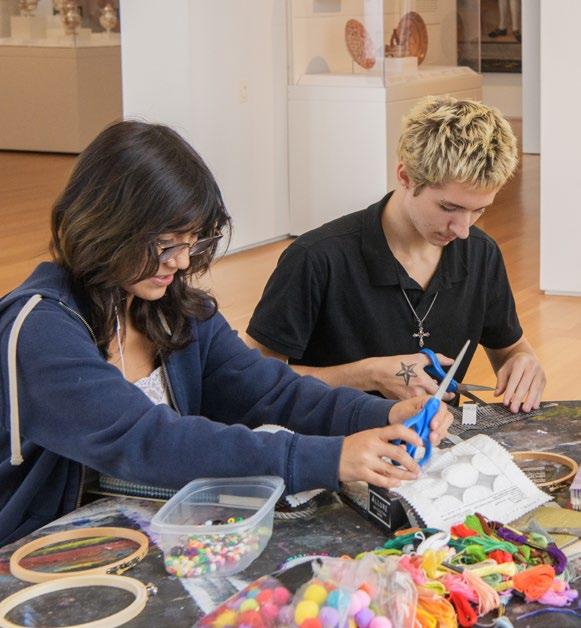
Guided by expert artists, look closely at original works of art and find inspiration to create your own projects during these studio workshops. Best for families with children ages 5 to 11.
Artful Story Time
Wednesday, January 22, February 19, 10:30–11 am free with registration
Story time with an artful twist! Come look, listen, and move as we make connections with original works of art and children’s books. Rotating featured readers means there’s always a new perspective to enjoy.
Get involved with art and community at the NCMA through programming, artist workshops, conversations, and opportunities to share your own creativity. Interested in learning more about the Teen Arts Council or the College Advisory Panel? Keep up-to-date with all happenings on our Teens and College programs web pages.
Tickets, registration, and additional events: ncartmuseum.org/teencollegeprograms
Teens Sketch the Galleries
Saturday, December 7, January 4, February 1, noon–2 pm free with registration
Spend time sketching with other teens. Bring a pencil and your sketchbook and follow prompts or find your favorite sketching spot with a friend. All levels of experience are welcome. For ages 13–18.
NCMA College Days
Friday, December 13, January 17, February 21, 11 am–4 pm free with registration
Explore the galleries with your friends, meet student and professional artists, and immerse yourself in a variety of activities and tours.
NCMA Teen Day
Saturday, January 4, noon–4 pm free with registration
Create something, immerse yourself in the galleries, and learn a thing or two
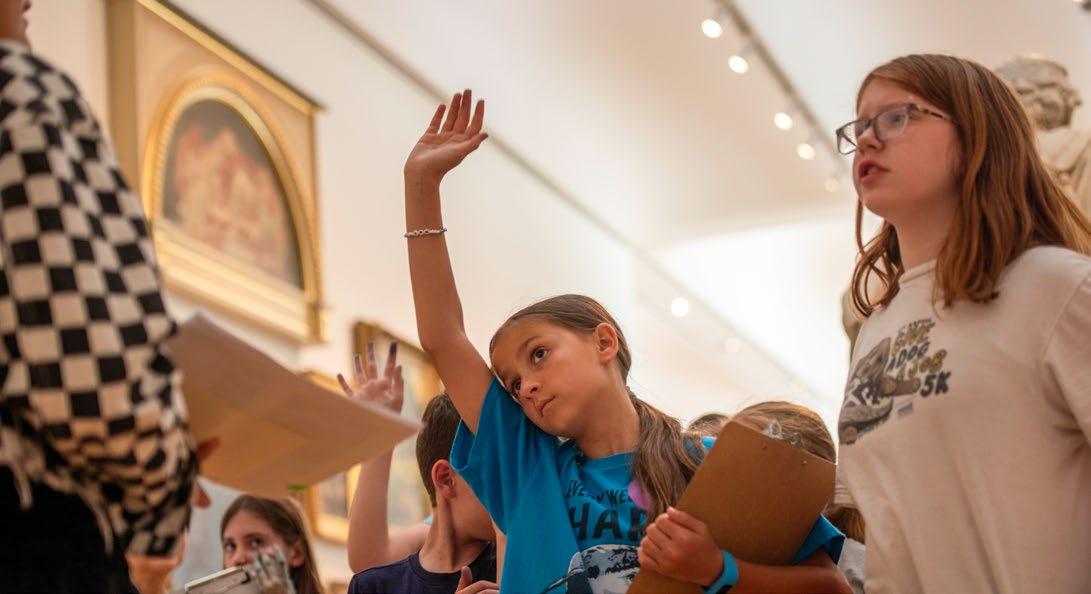
about our Museum teen ambassadors. Find pop-up art activities and enjoy a day at the Museum with the Teen Arts Council.
Teen Battle of the Bands
Friday, February 7, 6–8 pm free with registration
Ready to jam out with North Carolina’s rising teen bands? Come enjoy a night of musical talent and cool merch and vote in our first-ever Teen Battle of the Bands!
The NCMA offers free private tours of the People’s Collection to school, youth, and adult groups. To select and request the right tour for you, visit us at ncartmuseum.org/visit/tours
NCMA Public Tours
Every Thursday and Saturday, 1–1:50 pm free
These tours of the People’s Collection are great during a first-time visit, after lunch at our cafés, or when you’re curious about the 5,000+ years of art and culture exhibited at the Museum.
Family-Friendly Tours
Saturday, December 7, January 4, January 18, February 1, February 15, 10:30–11 am free with registration
Find new favorites alongside old friends on these playful tours. Tours are 30 minutes long and are best for kids ages 5–11 with their adult companions.
Museum Tours in ASL
Saturday, January 18, February 15, 10 am–noon free with registration
These docent-led tours in American Sign Language are intended for adults who are Deaf or Hard of Hearing; no English is spoken. They take place in both East and West buildings, and the theme varies each month.
Additional information: learn.ncartmuseum.org
online course
Art and Global Learning
Tuesday, January 28–Tuesday, April 8 Ticket purchase required
This self-paced online course uses artwork from the Museum’s collection as a pathway to comprehending global issues and developing cross-cultural understanding (1 CEU in art or digital learning, with approval from the local school system).
teacher workshop
Making Morning
Saturday, February 1, 10 am–noon
Ticket purchase required
Enjoy a morning of community through art making with other educators. Visit NCMA Learn for more details.
Beginning this spring, the NCMA will undergo an ambitious expansion plan that will increase accessibility, foster multigenerational learning, and create approachable spaces. These improvements are possible thanks to funding from the State of North Carolina and private philanthropic support. Visit often to monitor the progress of these capital projects, which will invite people to make connections with one another, art, and nature.
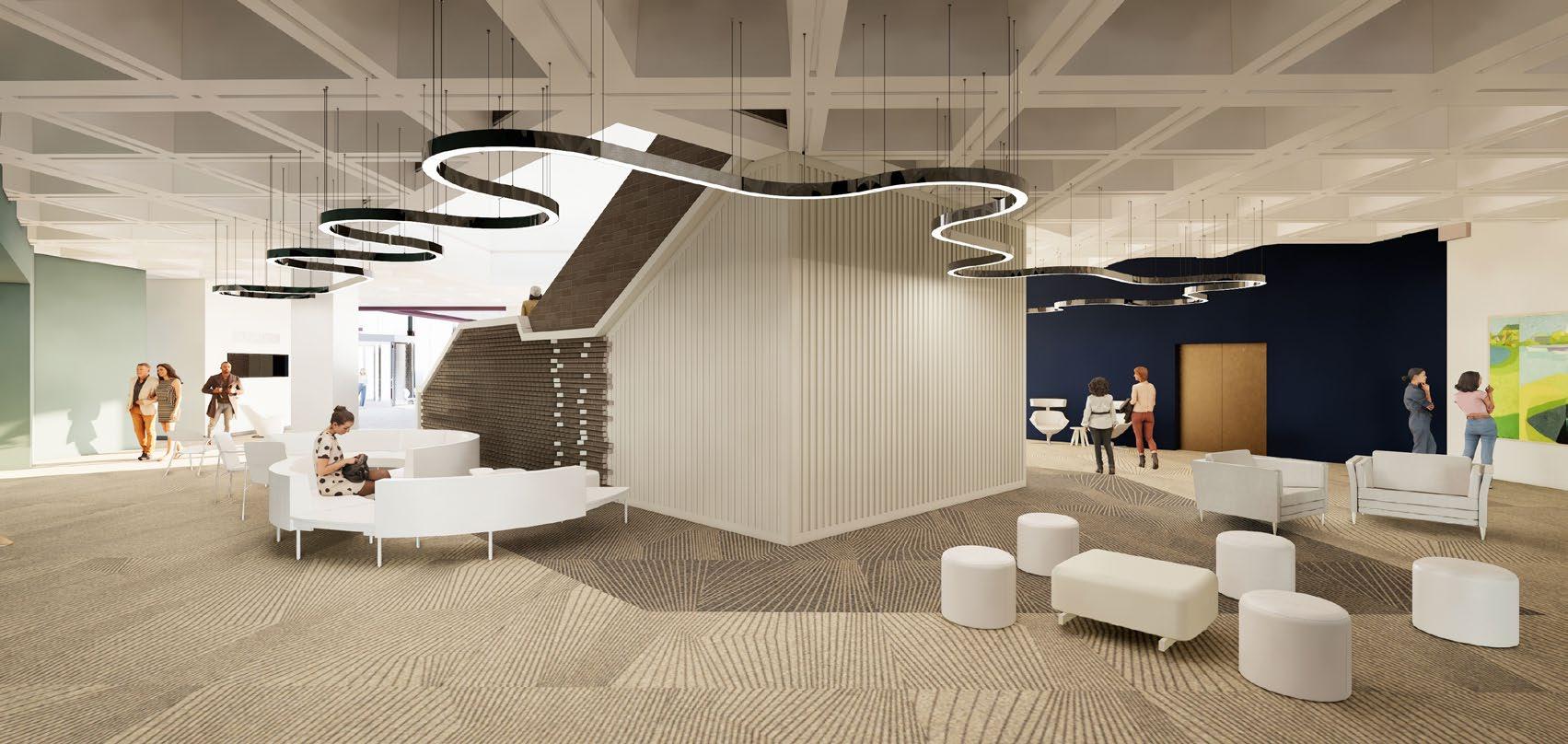
▲ The lower level of East Building will be transformed into a new entrance that increases accessibility and connection between the Museum and Museum Park. Visitors will enter a new café and lounge space, and multigenerational audiences will enjoy interactive and hands-on art-making opportunities, signaling the Museum’s commitment to inspiring creativity.
▶ This renovation includes a reimagined East Lawn and entrance that encourages guests to linger and enjoy the NCMA’s bucolic setting. Special events such as weddings can take place indoors or out. From the outdoor space behind East Building to the Joseph M. Bryan, Jr., Theater in the Museum Park, this arts and entertainment area will offer art installations, programs, and hangout spaces.
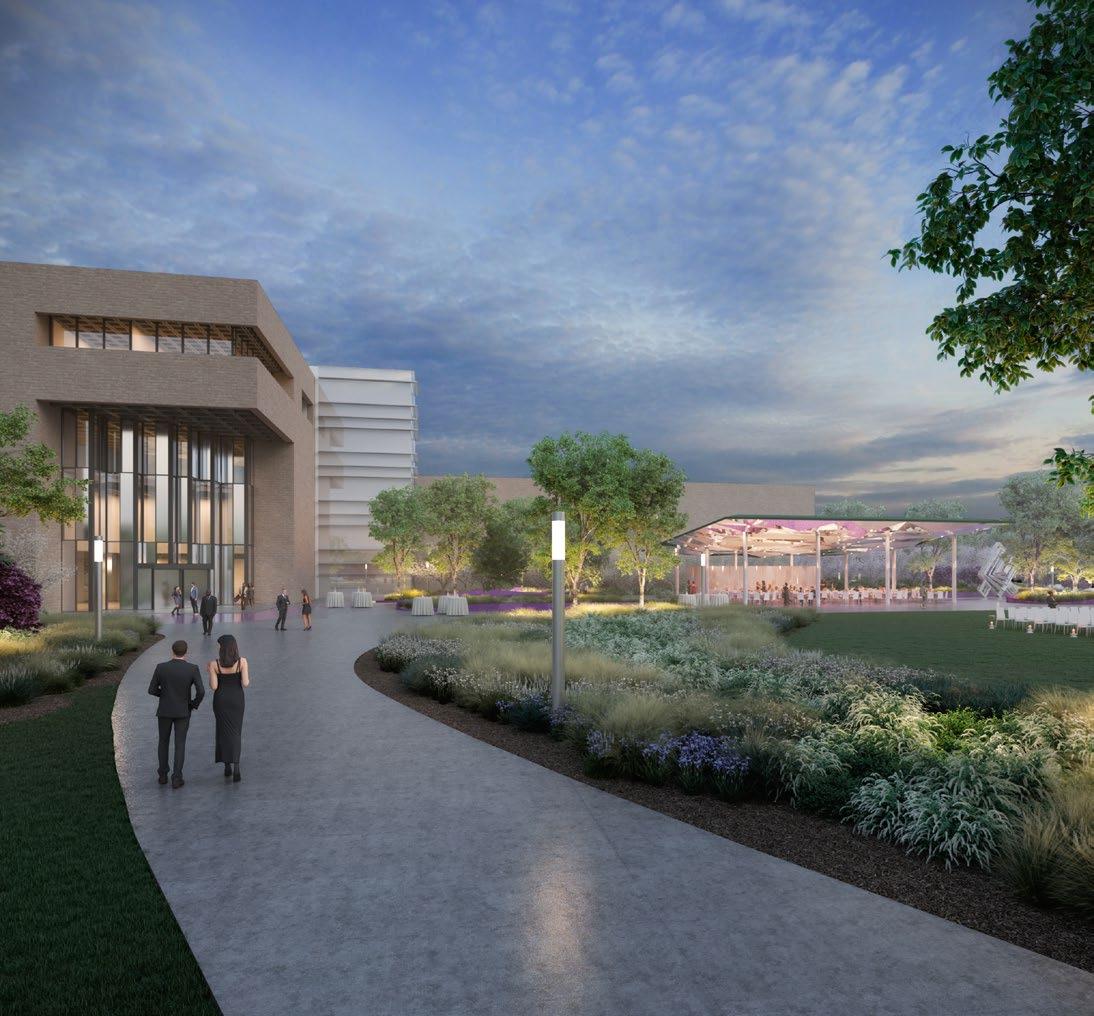
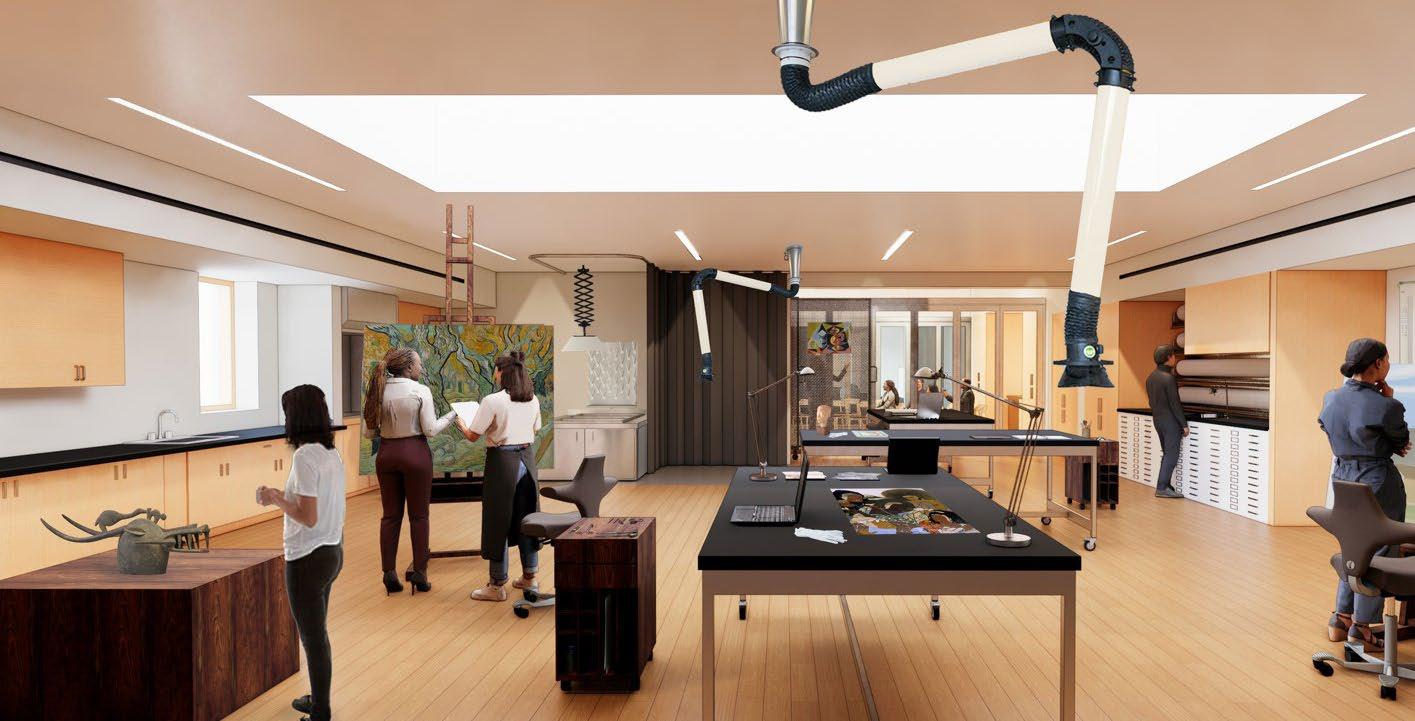

▲ The conservation project will create a visitor-facing workspace, conservation exhibition space, and education studio on Level A of East Building. This will allow the Museum to share the often behind-the-scenes preservation of cultural heritage and to illustrate the connections between art and science. The conservation project will also renovate the existing 3,000-square-foot Art Conservation Center, ensuring state-of-the art capacity to preserve, restore, and make widely accessible the Museum’s collection.
◀ The revitalization of the Amphitheater will focus on accessibility and visitor comfort. Updates include redesigned pathways that will allow individuals with disabilities to easily access concessions, the ground level, and increased accessible seating; new stadium seating that ensures visitors have backs on their seats; and renovated restrooms.
top: Rendering courtesy of HH Architecture; design courtesy of Samuel Anderson Architects with HH Architecture
bottom: Drawing and design courtesy of Design Workshop with HH Architecture
opposite top: Rendering and design courtesy of HH Architecture
opposite bottom: Rendering and design courtesy of Eskew Dumez Ripple with HH Architecture
william j. carpenter Executive Director, NCMA W-S
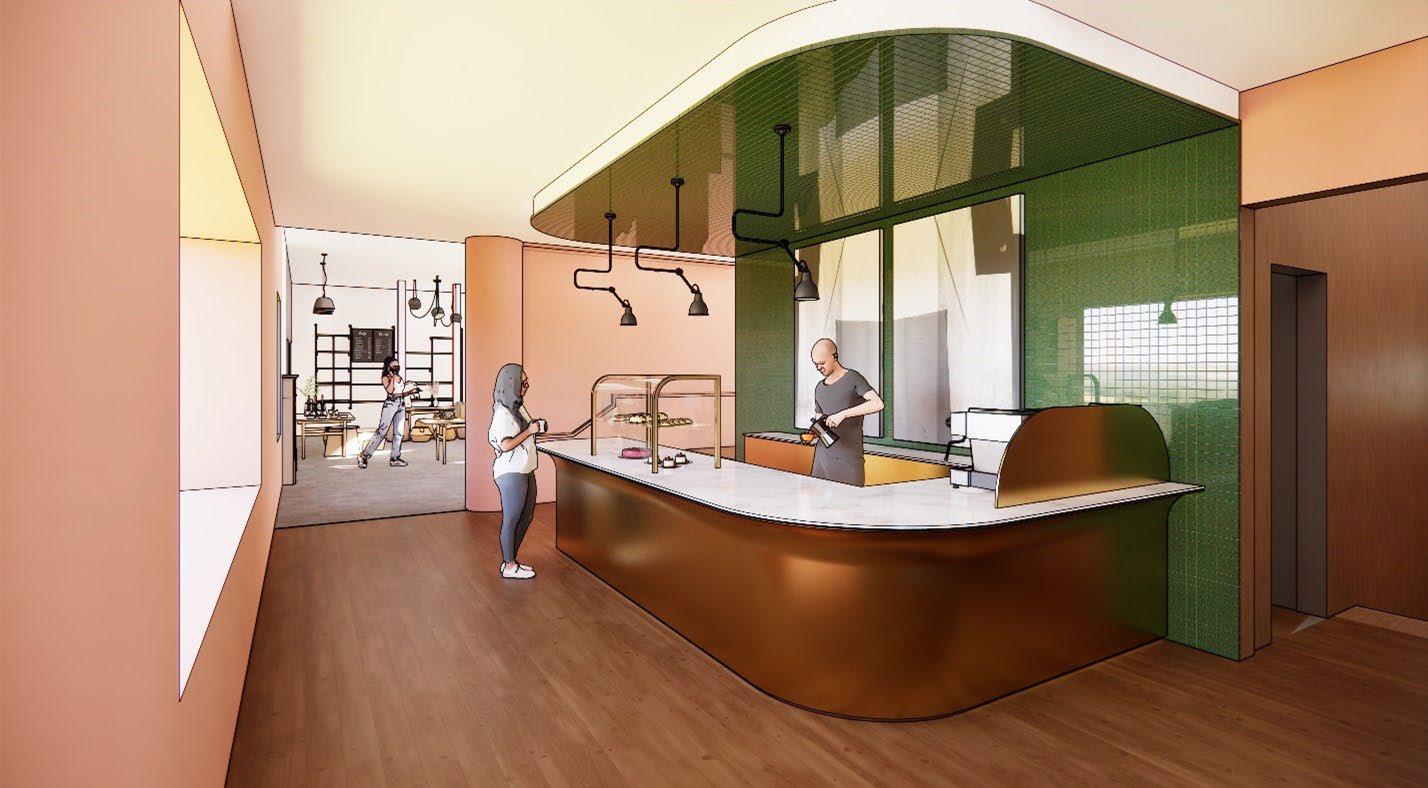
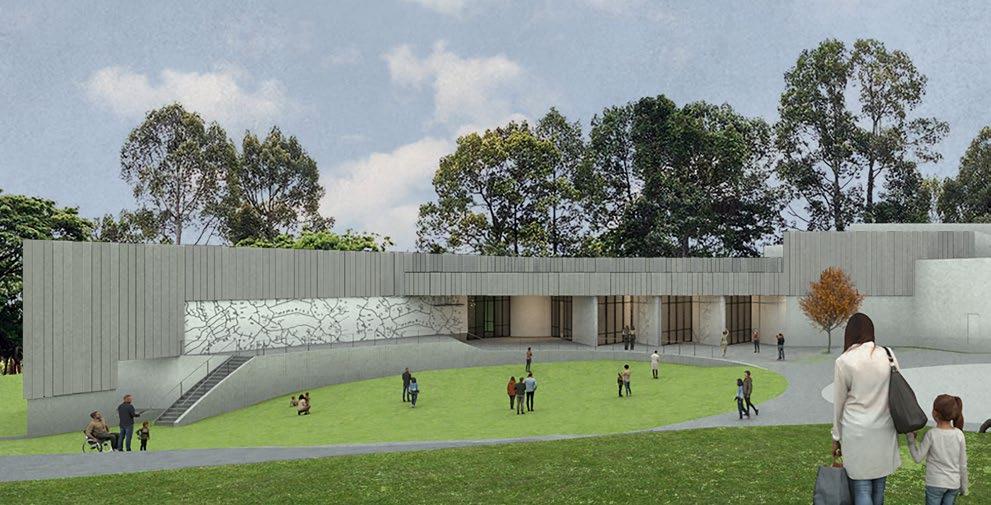
Thanks to a historic investment from the North Carolina General Assembly and the generous support of visitors and donors, the North Carolina Museum of Art, Winston-Salem (NCMA W-S), will soon undergo a major transformation that increases our capacity to create revelatory experiences with contemporary art, culture, and education. Plans include state-of-the-art upgrades to the galleries, such as moveable walls, digital projection technology, and a fully furnished activity space for our community programs. The front lawn near the main entrance will be reshaped into a gentle slope to provide seating for outdoor concerts. In adjoining Hanes House, renovations will bring a coffee shop, catering kitchen, and indoor and outdoor dining spaces. A larger retail space for showcasing regional creators is planned as well.
Across the facility and grounds, we’ll be incorporating universal design principles to ensure access to all areas and events. These changes include a new entrance sequence that enables visitor drop-offs and accessible parking. A new elevator will bring guests to each level of the building, including the Hanes House living room and a redesigned Collectors Gallery on the second floor. Visitor parking will be made available in front of Hanes House, and the beautiful front door will be worked into a new accessible design.
The renovations will also expand our support for regional artists and creators by enabling new residency programs. Professional artists will be able to apply for short-term and midterm residencies to complete a body of work or start a new project. We will convert the original living quarters of Hanes House into a new artist suite, complete with a sunny studio and private entrance. In the basement we’ll build art studios with elevator service and outdoor loading space.
These updates will ensure that the NCMA W-S continues its important work connecting visitors with the very best of contemporary art, culture, and education. When the dust settles, citizens of North Carolina will have access to a 21st-century center for the arts—one that speaks to the state’s own history of supporting innovation, creativity, and community engagement.
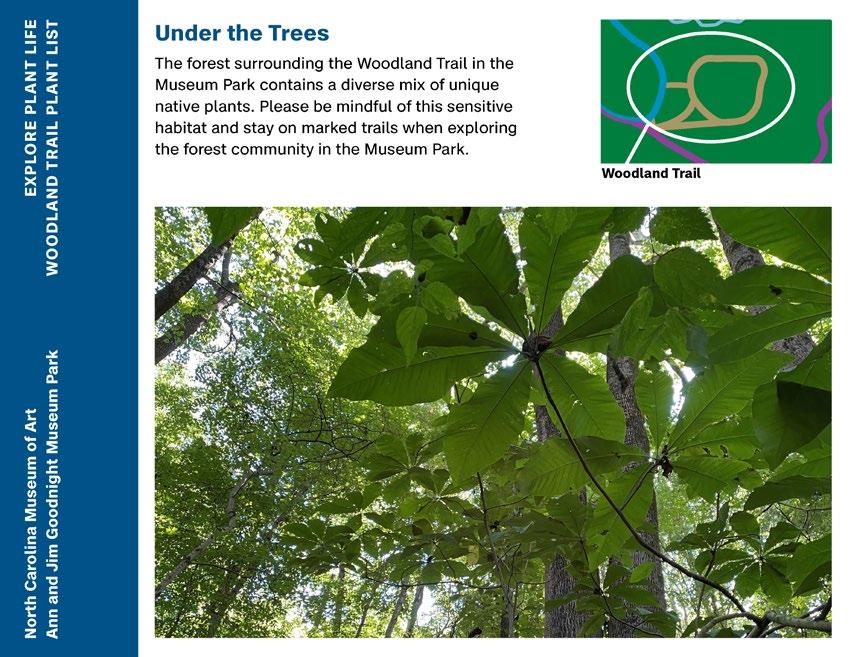
Have you ever been walking in the Museum Park and wondered about the name of a colorful plant or beautiful tree? Explore Plant Life is a new guide series to aid your exploration of native and ornamental plants in the Park. The guides provide a self-directed tour experience thoughtfully designed to enrich your knowledge of vegetation used in campus landscaping.
These guides group plants by specific areas in the Park, helping you identify flora in the garden areas where you are likely to notice them.
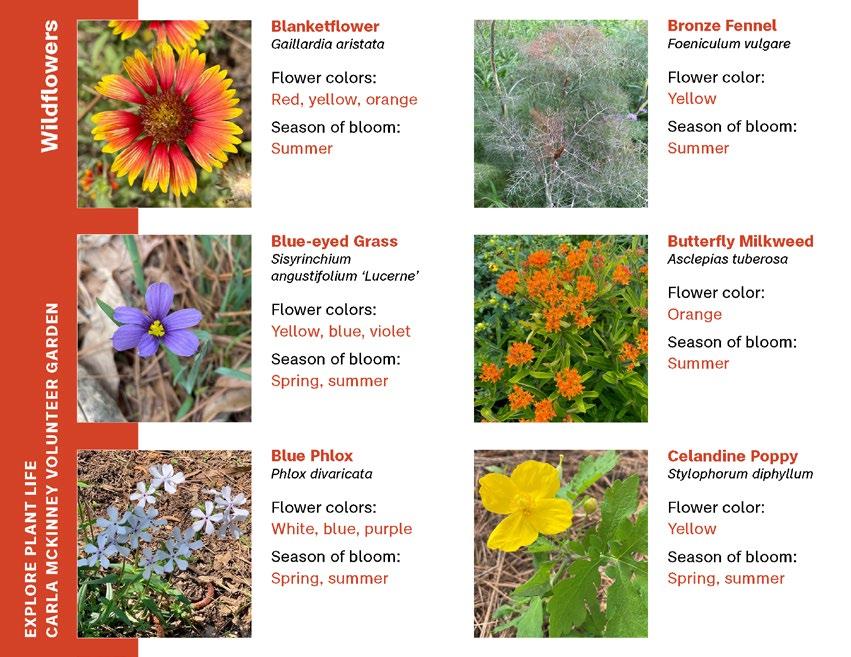
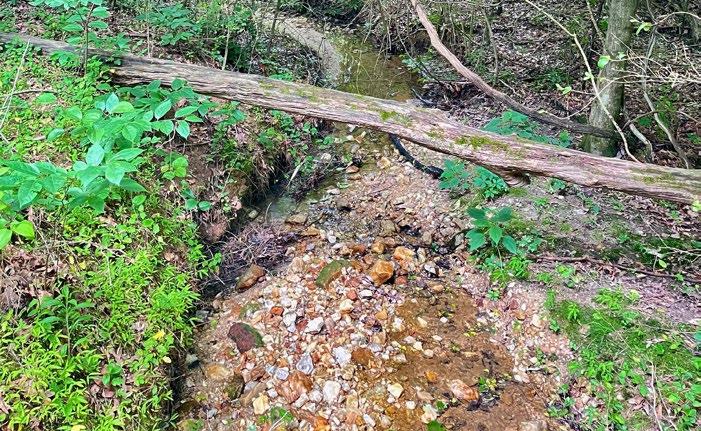
The series features plant lists for six areas: Carla McKinney Volunteer Garden, pond, West Building gardens, Welcome Center, Sensory Garden, and Woodland Trail. The Trees of the Museum Park guide contains 54 different tree species found throughout the Park.
The series includes detailed information about how these plants appear during different seasons to assist you with identification. Features include common and scientific names, bloom colors, bloom times, and images. Guides are arranged in sections by plant type—wildflowers, bulbs, grasses, ferns, shrubs, and trees—to assist you with your search. Use the series to enrich your visits to the Park throughout the year.
The guides are accessible from the Museum Park web page under the Explore Plant Life tab and on NCMA Learn.
Phase 1 of the stream restoration project begins in early 2025 to restore the unnamed tributary in the Park. The project entails repairing the degraded stream and planting trees along its banks. Plans include new stream crossings to improve trail circulation.
The coming months are buzzing with vibrant programs and unforgettable experiences at the North Carolina Museum of Art. Members enjoy exclusive early ticket access to must-see events such as Art in Bloom, our stunning floral celebration that transforms West Building into a virtual garden. Early ticket access ensures you have the best available time slots for this cherished annual festival. Members also receive discounts on an array of engaging related programs and workshops, perfect for honing your artistic skills or exploring new creative outlets.
But that’s not all—membership gives you priority access to register for our hugely popular summer camps and for the Museum’s outdoor performing arts and film series. On the road in 2025 while the Joseph M. Bryan, Jr., Theater in the Museum Park undergoes renovations (see page 21), the shorter series fea turing world-class performances and hit movies will take place in a variety of intimate settings around the city. Whether it’s securing the best seats or taking advantage of special member pricing, your NCMA membership brings you closer to the art, culture, and community you love. Join or renew today to experience the full spectrum of benefits that only NCMA members enjoy!
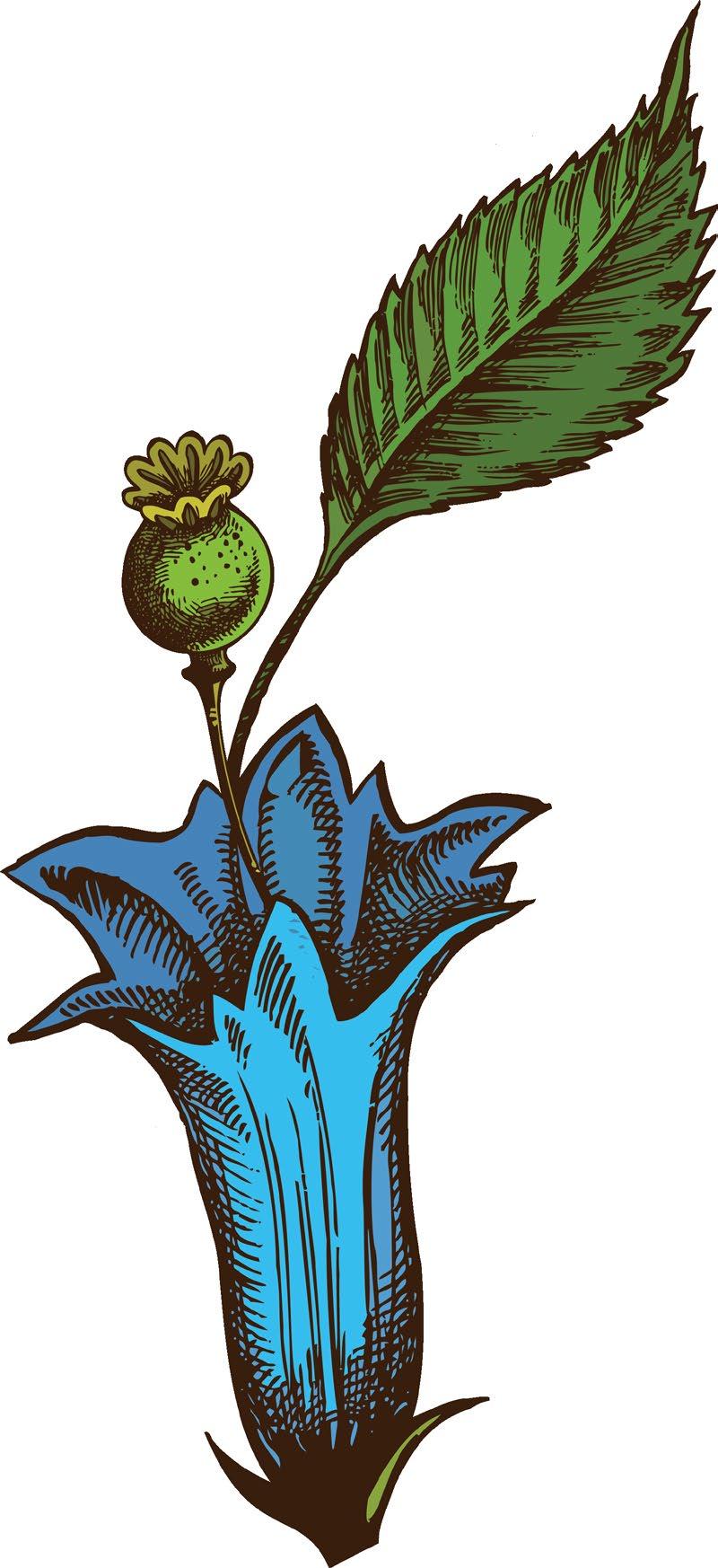


EAST AND WEST BUILDING GALLERIES, MUSEUM STORE AND EXHIBITION STORE, NCMA CAFÉ
Wednesday–Sunday, 10 am–5 pm
EAST CAFÉ
Friday–Sunday, 11 am–4 pm
ANN AND JIM GOODNIGHT MUSEUM PARK
Daily, dawn to dusk
WELCOME CENTER
Saturday–Sunday, 10 am–5 pm (weather permitting)
The Museum seeks to make a welcoming space for all. Visit ncartmuseum.org/accessibility for details about on-site accommodations and more information.
Admission to the People’s Collection is free. Members receive free admission to ticketed exhibitions.
For exhibition, performance, and program tickets, go to ncartmuseum.org
VISITOR EXPERIENCE help@ncartmuseum.org | (919) 715-5923
Please contact us via email during open hours for the quickest response.
One year of NCMA membership starts at $50! ncartmuseum.com/membership membership@ncartmuseum.org | (919) 664-6754
Unique pillows, umbrellas, and journals from Fortuny
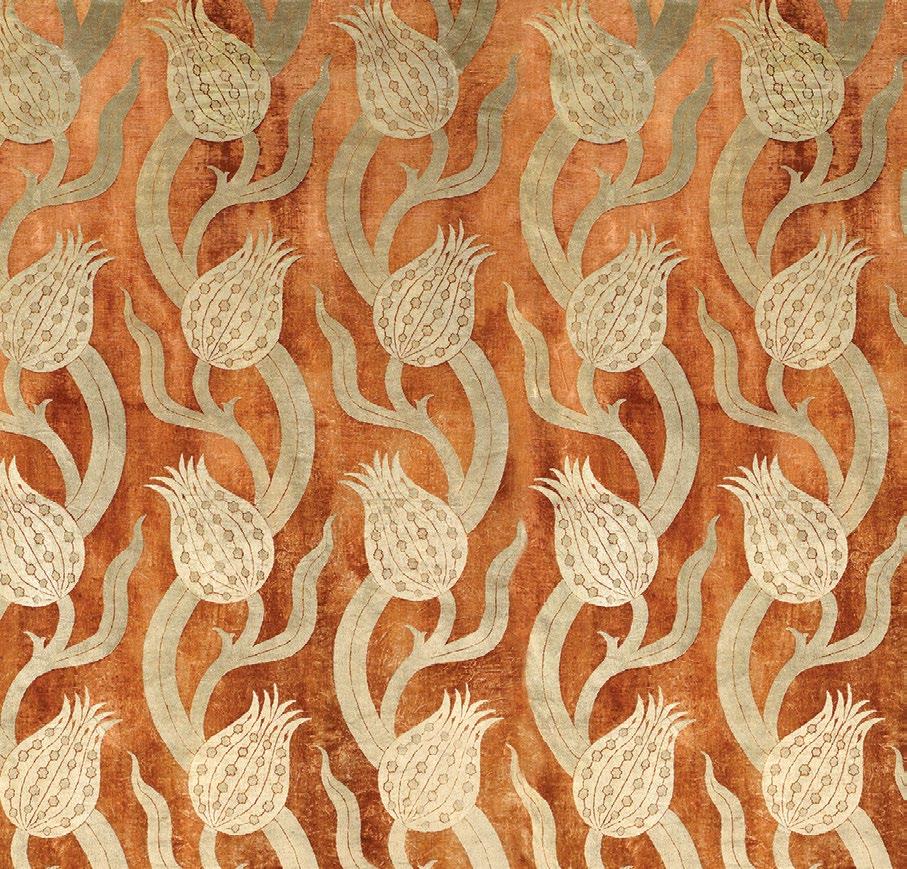
One-of-a-kind Murano glass-bead necklaces by Bethy T. Gruber
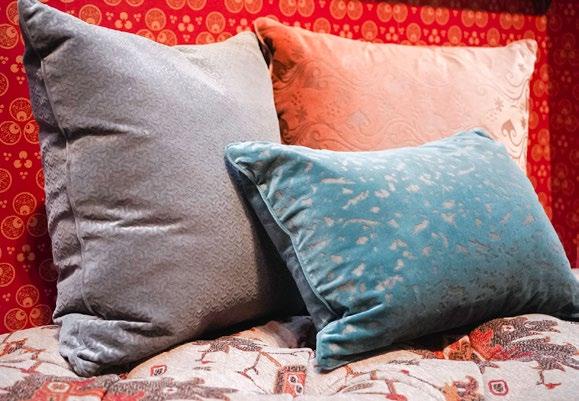
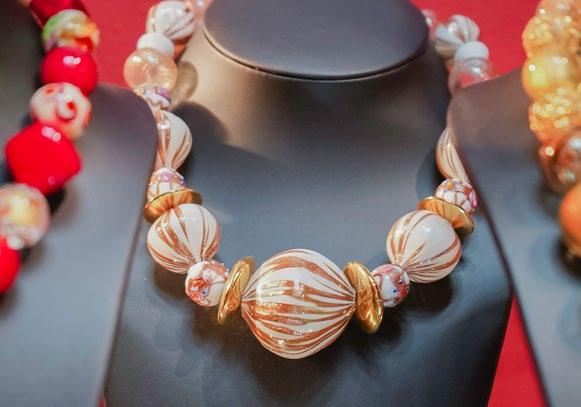
Serving and display pieces from Vietri, Hillsborough
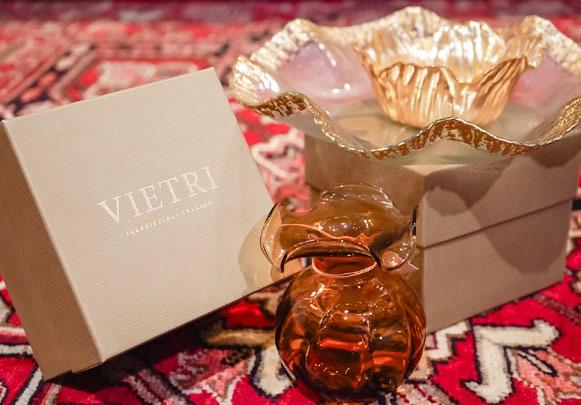
Visit the Exhibition Store in East Building to connect with local artisans and find something truly exceptional for gift giving. Contact help@ncartmuseum.org for additional information or questions.
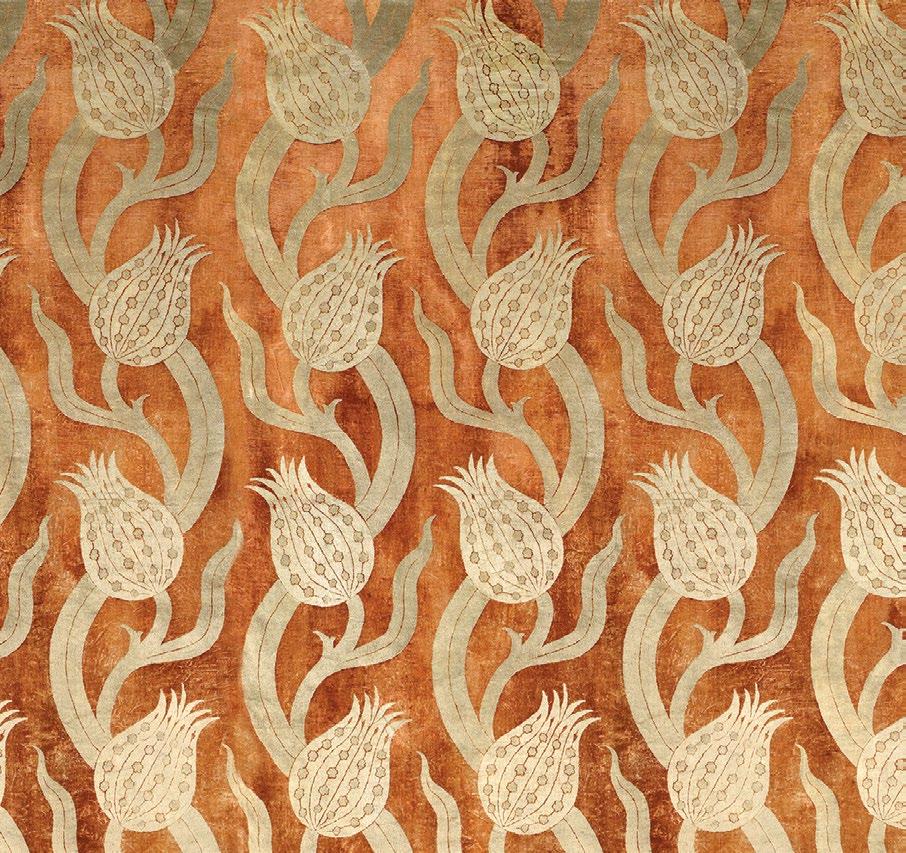
NC Museum of Art Foundation
4630 Mail Service Center Raleigh, NC 27699-4630
RETURN SERVICE REQUESTED
This past summer HBCU/MIHE program intern Keith Quick digitized a significant portion of the NCMA’s collection of archival photographs. Thanks to his work, these and other images documenting the history of the Museum are now available for study and use.
